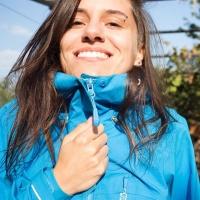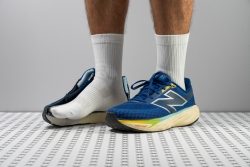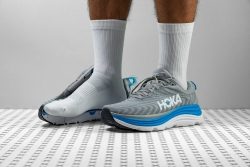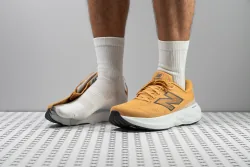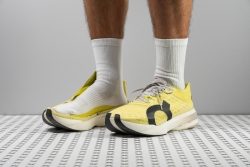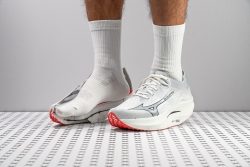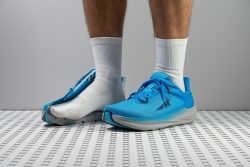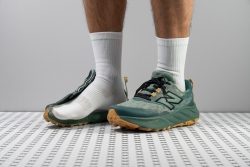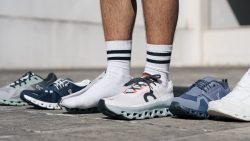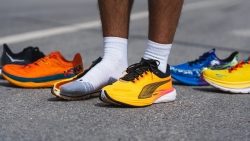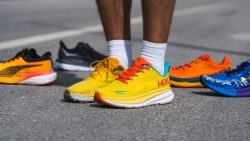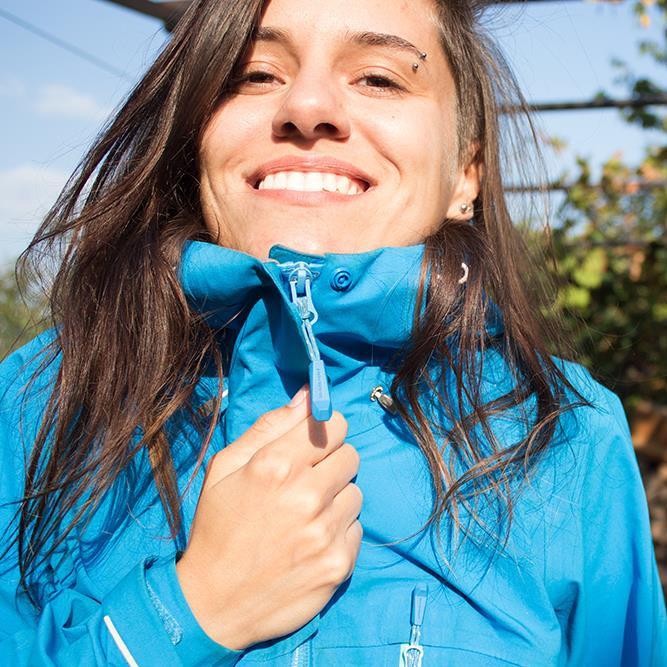7 Best Running Shoes For Knee Pain in 2025
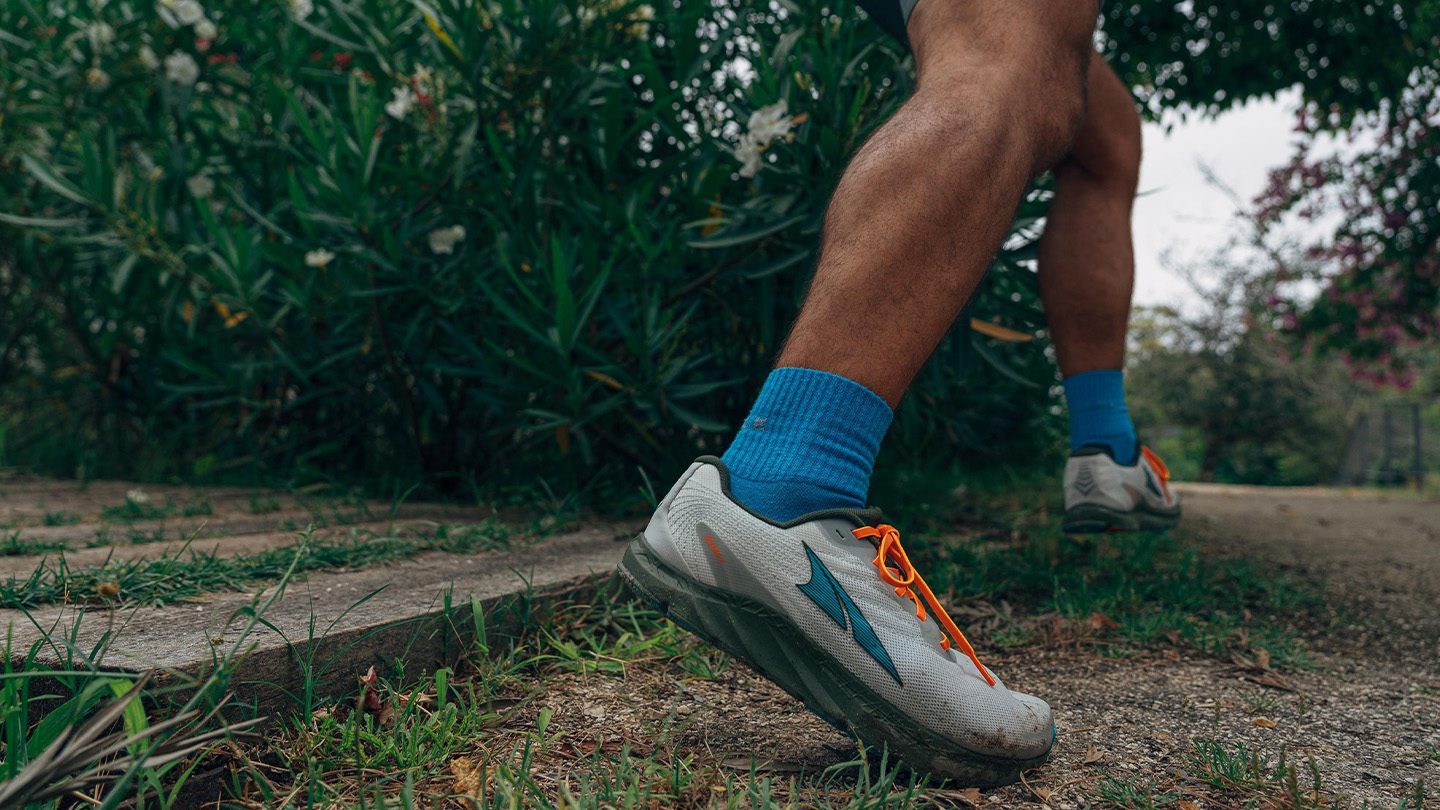
We buy shoes ourselves. We earn commissions when you buy through us, at no extra cost. Why trust us
Knee pain, patellofemoral pain syndrome (PFPS), or runner's knee—however it's called—means there's pain, and many runners will first consider changing shoes just to keep running. While that may help to some degree, we always recommend seeing a specialist for a proper diagnosis and rehab plan.
There are some features that studies have proven helpful when it comes to knee pain and, in this guide, we discuss exactly those. We also show how we test them in our lab and showcase the best picks that have all of those knee-friendly features.
How we test Running shoes for knee pain
For a shoe to end up here on the list, it has to be tested and then tested again and then to outshine the majority of other shoes.
First, we buy all the running shoes with our own money. This keeps us unbiased and it feels great as no one is telling us what to write or publish. We are free to publish the most objective test results.
Second, we do test runs in all the running shoes that we buy, and we make sure to abuse them properly, from running in different weather conditions and varying terrain to doing different paces and distances.
Third, we rip the shoes apart in the lab. This allows us to measure every little detail. We cut the shoes in half, freeze them, squeeze them, and do whatever it takes to describe each shoe with 20+ data points. We present these findings in a clear way that allows our visitors to compare the shoes with each other and the average values.
Based on all these tests, we hand-pick the best picks in different categories. Here, we present running shoes that made their competition disappear when it comes to knee pain.
Best running shoes for knee pain overall
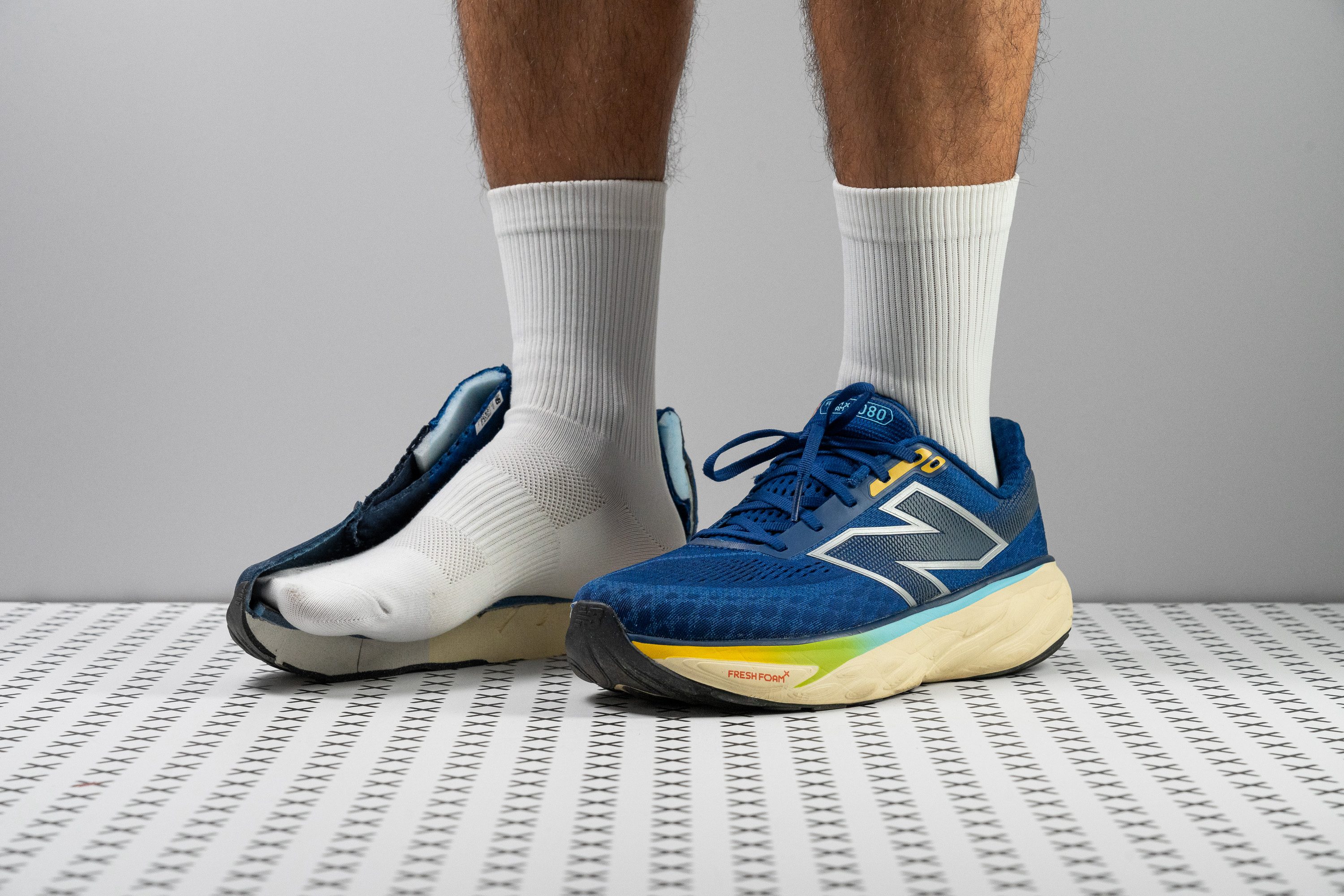


















































What makes it the best?
We found the New Balance FF X 1080 v14 to be the best choice for runners dealing with knee pain because it a) is perfect for forefoot strikers, b) features a cloud-soft midsole that's super comfy, c) is low-drop, and d) definitely worth the price!
When it comes to knee pain, we focus on the forefoot: the heel drop should be low to allow for a forefoot strike, and the midsole below the ball of the foot should be high enough to allow for great impact protection. This (potential change to) forefoot strike allows the knees to rest given that the majority of stress is sent to the foot or lower-leg muscles. Let's see how 1080 v14 performs in numbers: although the brand claims it's a 6.0 mm drop, we measured it to be 4.2 mm. We trust our measurements because we honour the guidelines from WorldAthletics.
At the forefoot, using the same guidelines, which means that we measured at 75% of the inner shoe length, we found 32.8 mm of midsole. This is astonishing! It's 21% higher than the average road running shoe! And it feels like a cloud which was explained by our durometer measurements. Once we stuck the durometer needle into the midsole, we noted down a reading of 11.9. No wonder if feels so soft, when it's 76% softer than the average! This is especially important for those who are not that used to the forefoot strike as they may enjoy a softer platform to cushion the impact.
The New Balance Fresh Foam X 1080 v14 is a daily trainer and it rides so. If your painful knees are allowing you to hit faster paces, look elsewhere as this ride won't catch up.
Pros
- Amazing step-in feel
- Excellent durability
- Cloud-soft midsole
- Ideal for forefoot and midfoot strikers
- Perfect for recovery runs
- Airy upper
- Fairly priced for a premium daily trainer
- Stability improvements
Cons
- Noticeable weight increase
- Tapered toebox limits toe splay
- Midsole could be too soft for some
- Lacks energy return
Best stability running shoes for knee pain
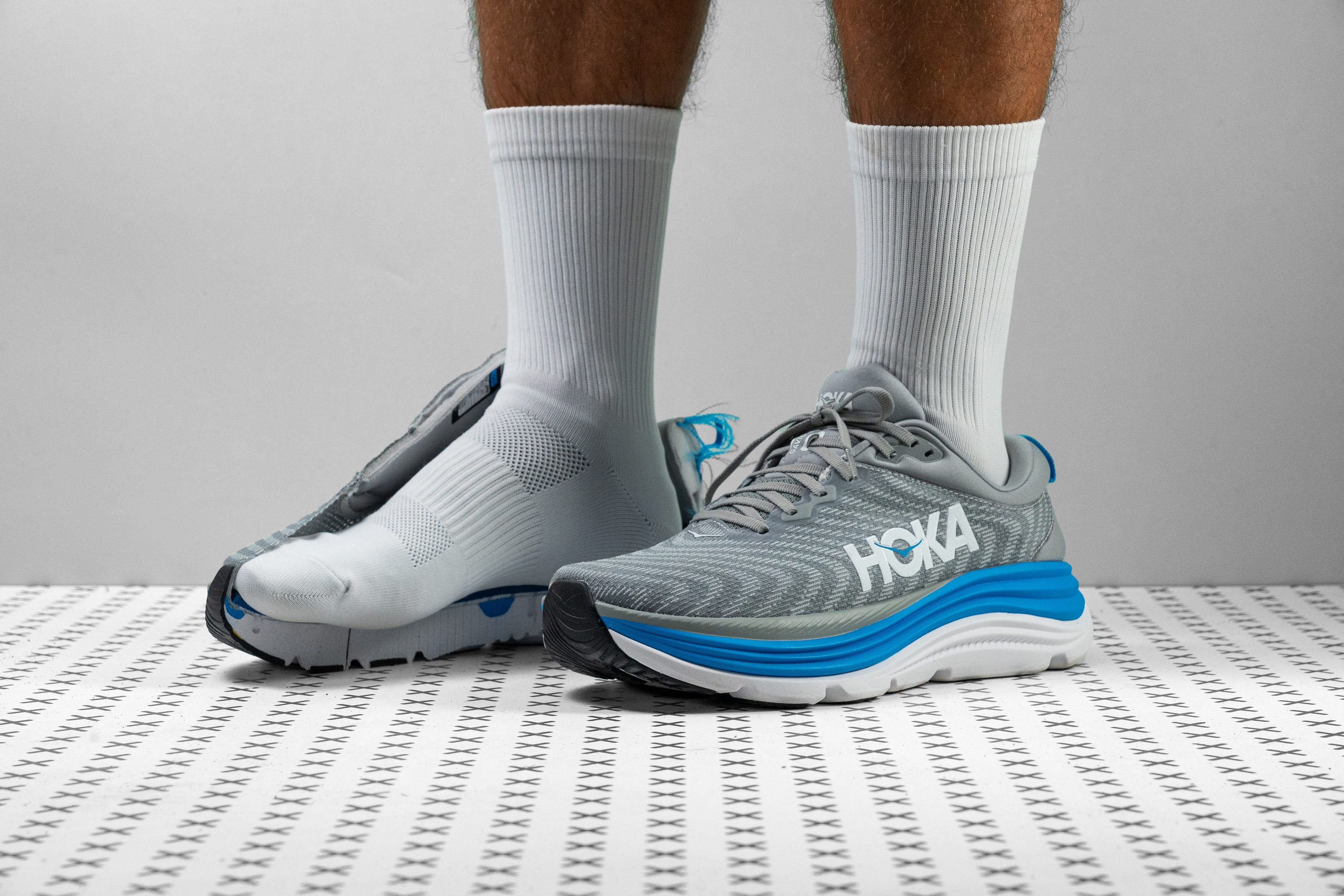


















































What makes it the best?
When it comes to this combo, stability plus knee-pain friendly, no other shoe comes close to the Hoka Gaviota 5. We tested the shoe on the test runs and in our lab, and everything points out that it deserves to be at the top. Let's break it down why.
Gaviota 5 is a stability shoe, which means it's great for those who overpronate. The stabilisation technology it utilises is not common, once we cut the shoe in half we could see that there's a firmer foam in the shape of a number 8 (although Hoka says it's shaped like a letter H), and the softer one is basically where the forefoot and heel rest. This does wonders for stability and they even topped it with a very wide platform, the midsole at the forefoot is 125.1 mm wide, which is more than 1 cm wider than the average! There's no wobbling in this shoe whatsoever.
When it comes to the heel drop, this is another example where it's good that we double check everything. The brand claims it's 6.0 mm but, when we measured it according to the guidelines from World Athletics, it turns out that the Gaviota 5 has a heel drop of only 2.2 mm. This comes in handy when we talk about heel pain, as lower drop helps move the stress from the impact toward the lower-leg muscles.
Gaviota 5 is also great for wide feet or for swelling that is inevitable on the long runs. This shoe is so cushioned (32.7 mm at the forefoot) it does support our legs on the long runs wonderfully.
We must warn you that the durability of the toebox on the Gaviota 5 is not good. It scored only 2 out of 5 and, given that it's also not higher than the average, if you have big toes that point up, or it's the toebox that you destroy the first on the running shoe, this pick may not play in your favour.
Pros
- Remarkably stable
- Breathable and comfortable upper
- Lightweight for its size
- Good stability option for forefoot strikers
- Ideal for wide feet
- Excellent for long runs
- Excellent for long runs
Cons
- Low drop might pose issues for heel strikers
- Performs poorly in colder conditions
- Not for narrow feet
- Midsole feels flat
Best recovery running shoes for knee pain
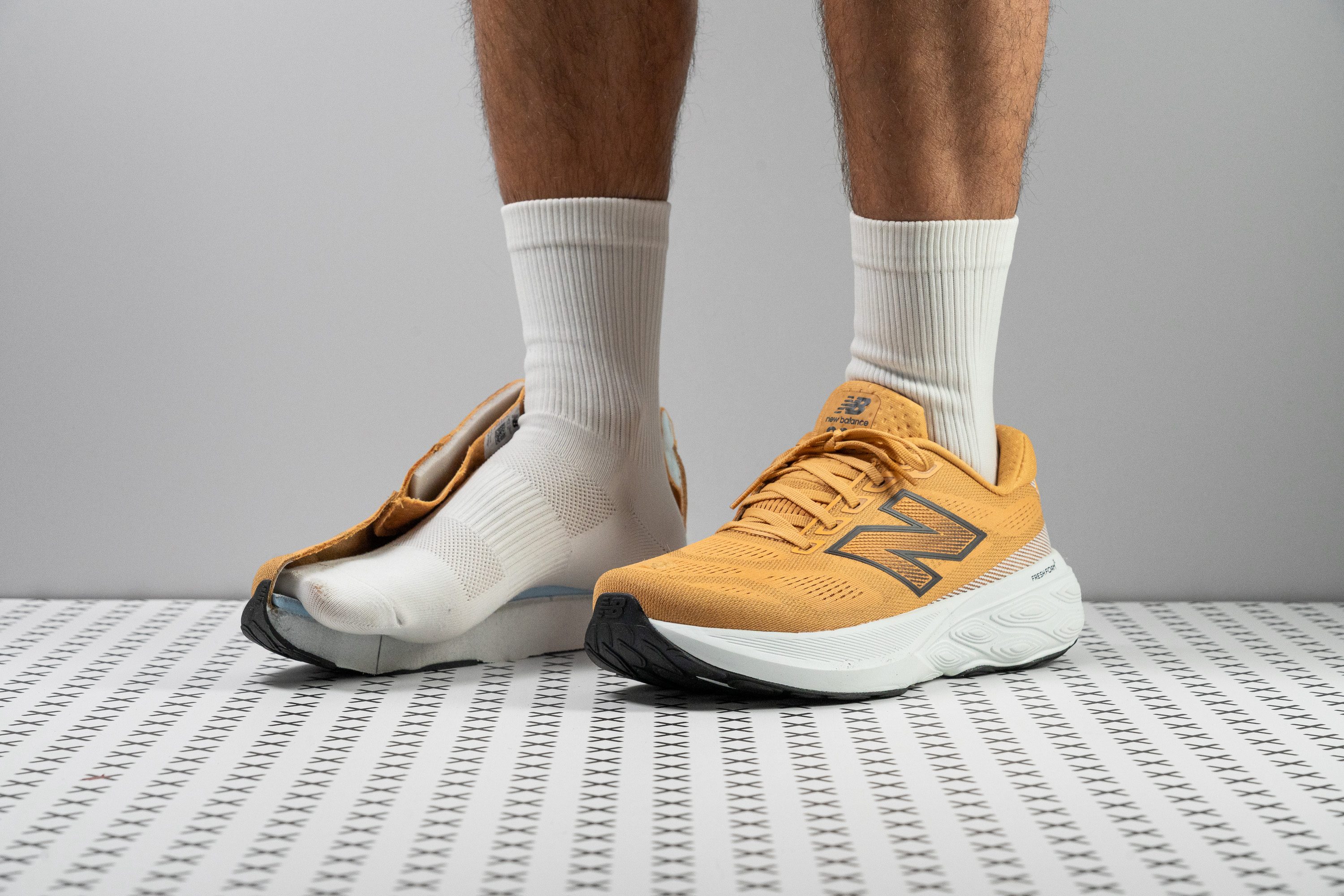















































What makes it the best?
The New Balance Fresh Foam X 880 v15 took care of our joints and muscles with its impressive impact protection, low drop, and generous cushioning. It made us feel at home, with its rockered ride creating seamless forward movement. Among running shoes for knee pain, it’s our top pick for recovery.
We measured an actual heel drop of just 4.3 mm, which promotes forefoot striking. A lower offset is ideal for those dealing with knee pain because the forces of landing are absorbed by the lower leg muscles, such as the ankles and Achilles.
Because we land with the front part of our foot first, we observed the performance of its forefoot cushioning. It measures an above-average 35.4 mm with high shock absorption of 114 SA, making it 9.6% more protective than the average running shoe’s forefoot.
Recovery runs call for effortless and mindless mileage, which the rocker enhances through its smooth transitions.
Unfortunately, the outsole has lots of exposed foam and only has a minimal 1.9 mm rubber in some areas. Those seeking a long-lasting shoe should find a pair with a thicker and more durable outsole.
Pros
- Affordable max-stack option
- Secure and comfortable lockdown
- Rockered geometry
- Plush tongue enhances comfort
- No heel slippage whatsoever
- Amazing for long runs
- Durable yet comfy upper
- Fairly priced
- Stable ride
Cons
- Much heavier than previous version
- Not the best for walking or casual use
- Fresh Foam X feels firmer than expected
- Outsole durability is now a real concern
Best 5K/10K running shoes for knee pain
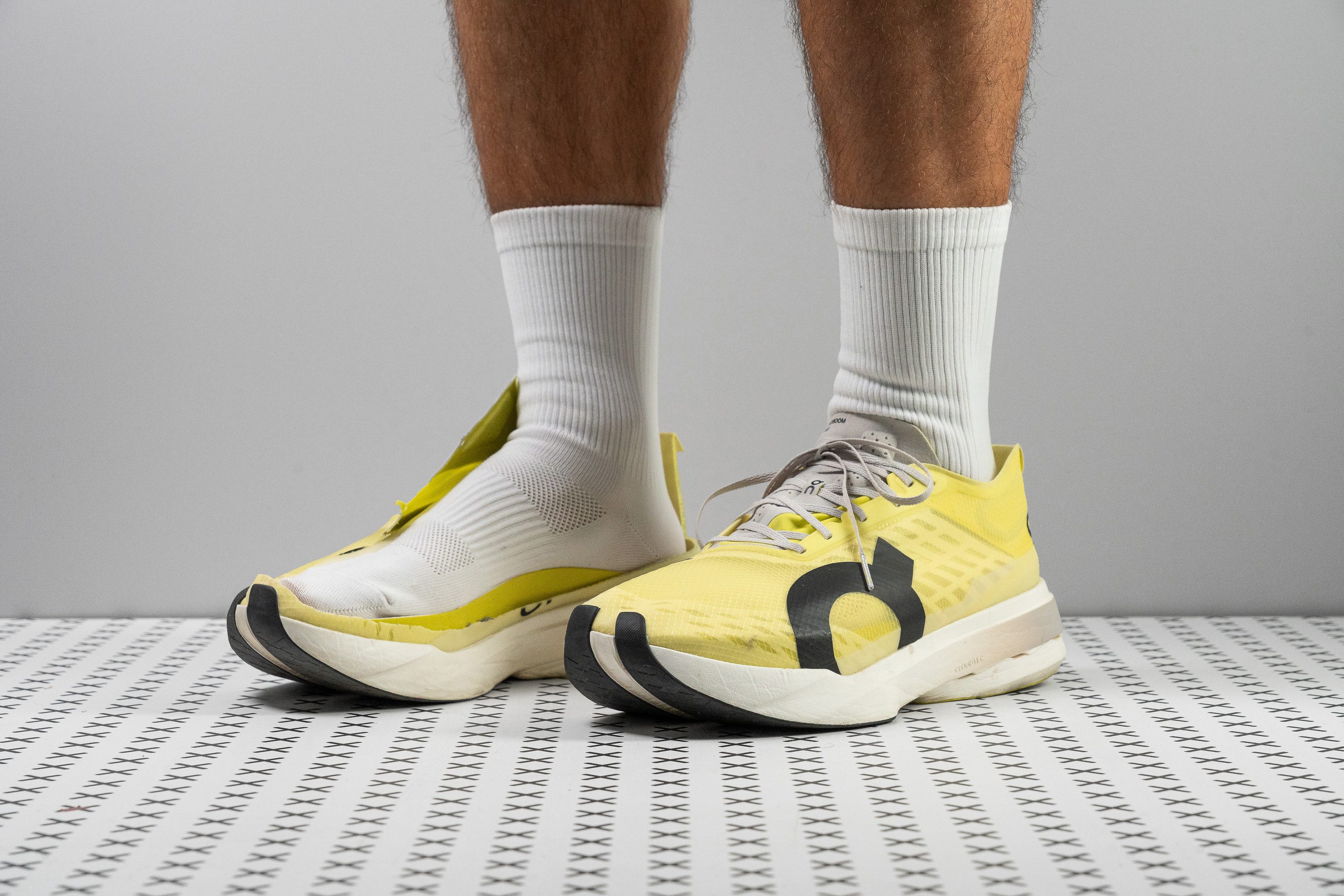














































What makes it the best?
With its light build, soothing ride, and snappy nature, the On Cloudboom Strike takes the lead for 5K/10K distances among knee pain running shoes. Lab results confirm its massive energy return, while its low drop and high shock absorption reduce the impact of landing on our knees.
Cloudboom Strike is fast, and we mean really fast! Its light 7.1 oz (201g) build promotes quick turnover, allowing us to go all out on shorter distances without feeling burdened. Its power output is off the charts, reaching a massive 72.1% in the heel and an even bouncier 73.4% in the forefoot. Together with the full-length carbon plate, this racer is made for breaking PRs.
The Helion HF foam not only provided energy return but also absorbed much of the load of each landing impact. We measured a minimal 3.2 mm offset, which encourages landing on the front half of our feet. With 34.9 mm of foam beneath the forefoot offering solid shock absorption of 127 SA, our joints felt well-protected, especially our knees.
However, Cloudboom Strike’s lack of stability isn't ideal for runners dealing with knee pain and overpronation. Those who need more support should find another shoe.
Pros
- Exceptional energy return
- Outstanding shock absorption
- Lightweight for its high stack
- Roomier fit than previous model
- Excellent traction
- Innovative Pebax insole/midsole design
- Perfect for forefoot strikers
- Premium-quality materials
- Handles anything from 5K to marathons
- Generous rubber coverage
Cons
- Potential heel slippage
- Not for heel strikers
- A bit expensive
- Limited stability
Running shoes for knee pain with the best shock absorption
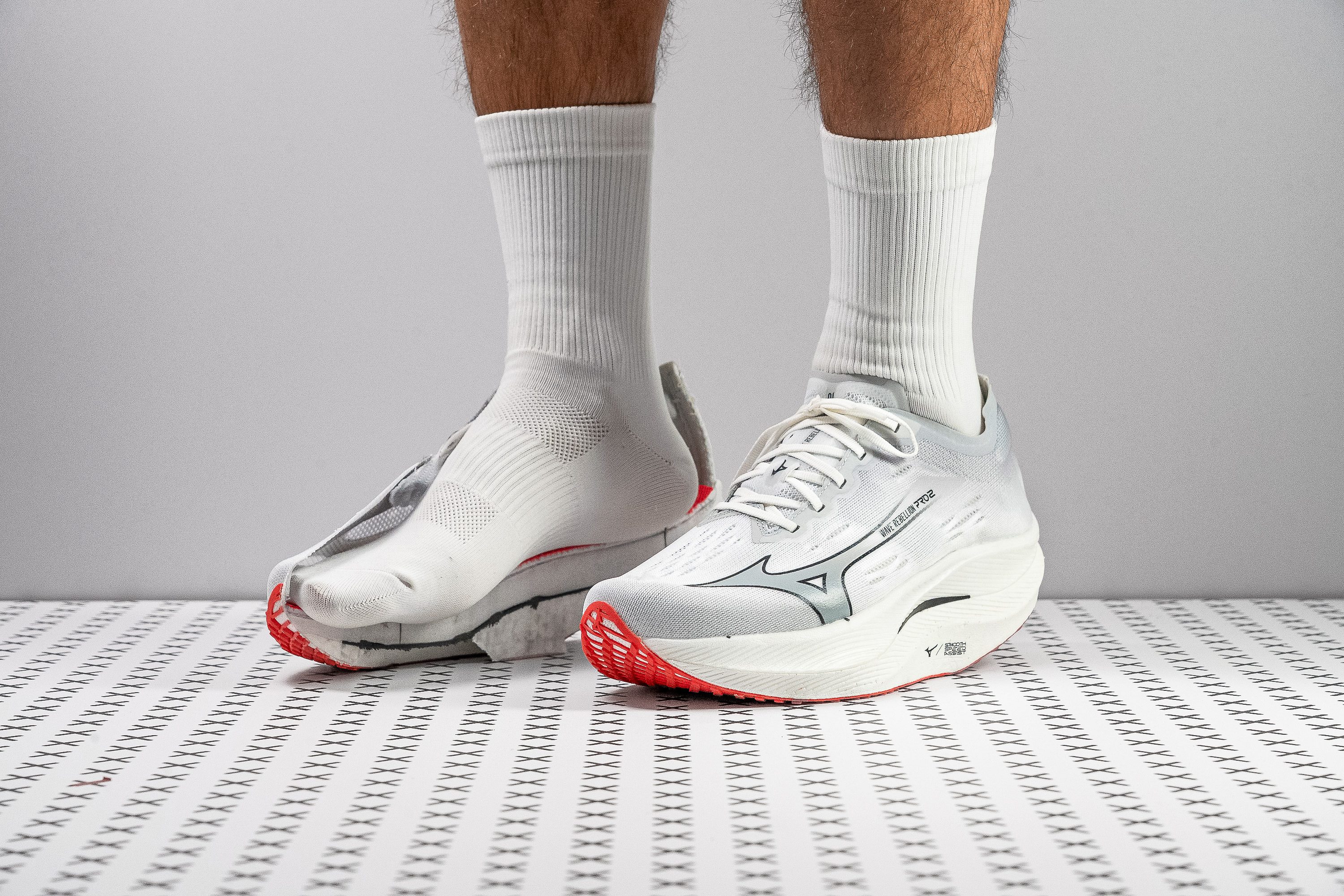





























































What makes it the best?
Unlike some injuries, knee pain is something that runners can get away with, by choosing running shoes that don't put that much stress on the knees. When it comes to sparing the knees yet still running at fast paces, AND having fun in a plated shoe, nothing comes close to the shock absorption of the Mizuno Wave Rebellion Pro 2!
It looks odd and it definitely catches the attention. However, it also looks insanely cushioned, yet it's legal if we ask WorldAthletics! How did they do it? By having a huge heel bevel! This allowed the shoe to have 37.9 mm at the heel and 35.8 mm at the forefoot. This translates to a heel drop of only 2.1 mm, which is not that common in premium race shoes! Yet, it's great for those struggling with knee pain, as lower drops, especially those closer to the zero, make us land at the forefoot and, therefore, we use our knees less and our lower-leg muscles more. When we tested for its impact protection, it performed 25.2% better than average.
Maybe the plate in the midsole is not a carbon-fibre one per se, but a carbon-infused nylon plate, it still brings the much needed propulsion to this race shoe. It's definitely a needed stiff component, given that the midsole is very soft at 16 HA. For comparison, the average softness of road running shoes is around 21 HA (the higher the number, the firmer the midsole).
While it packs a lot, the Rebellion Pro 2 is still a premium shoe and it costs like one. At £250, it may be a hit or miss for those not sure of their foot strike or who prefer their ride to be super stable.
Pros
- Truly unique
- Significant improvements from v1
- Complies with World Athletics regulations
- Ideal for midfoot strikers
- Enhances forward momentum
- Dependable traction
- Reduced weight
- Ultra-fun running experience
Cons
- Energy return is low compared to other supershoes
- Stability issues
- Not suited for rearfoot or forefoot strikers
Best zero-drop running shoes for knee pain
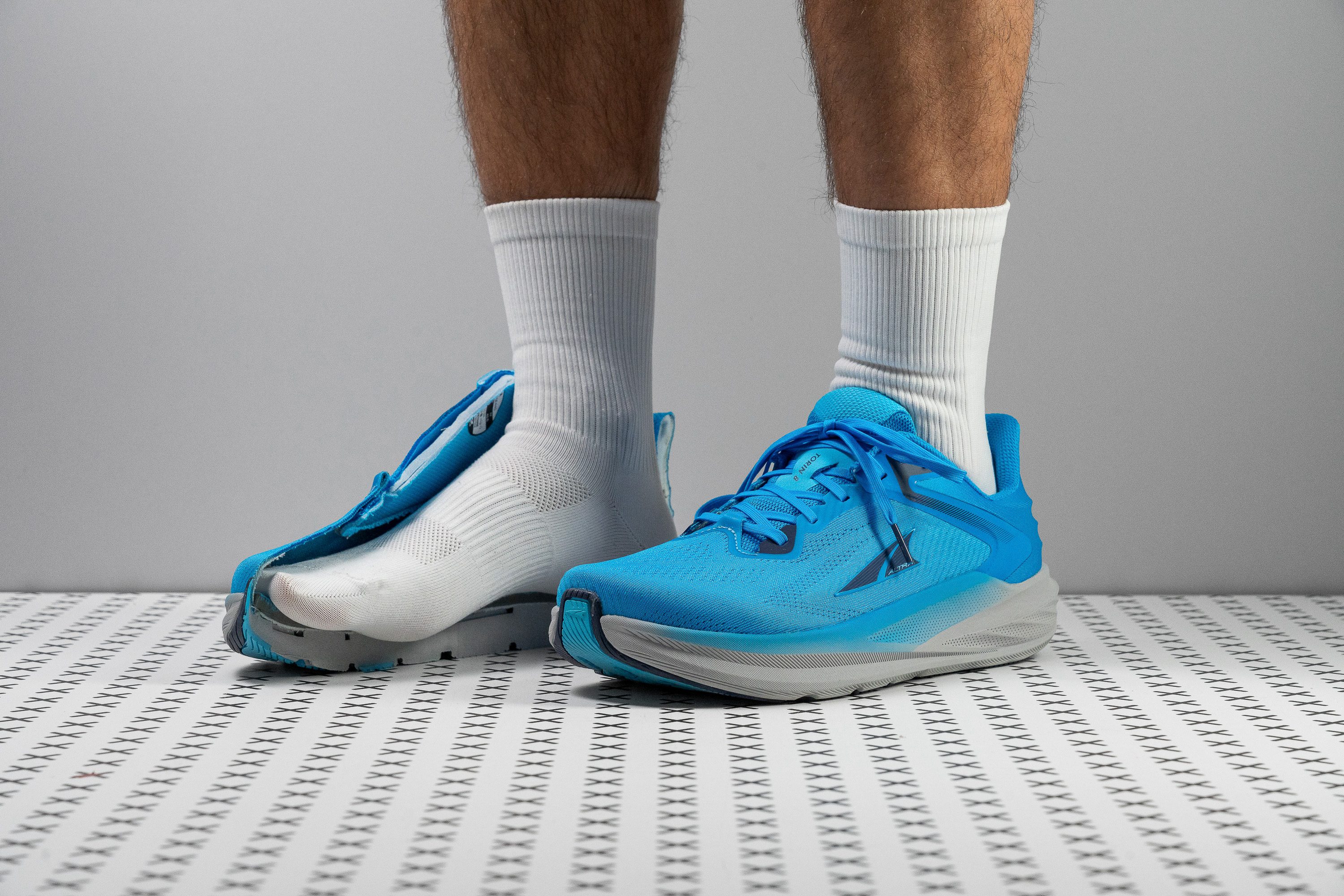

















































What makes it the best?
The Altra Torin 8 promotes consistent forefoot landings, with its generous dimensions and strong impact protection up front. Our lab tests verify its foot-friendly design, and it leads the knee pain running category with the best zero drop.
We measured the stack height of Torin 8 at 27.6/27.7 mm, which means it features a genuine zero drop at -0.1 mm. The absence of an offset promotes forefoot-striking, which helps reduce the load on our knees since our calves and foot muscles do more work.
To further lessen the stress on our muscles and joints, Torin 8 offers strong shock absorption in the forefoot, backed up by its high 109 SA result in this area. In terms of width, it’s also above-average at 117.7 mm, promoting stable footing.
Torin 8’s toebox also has a foot-friendly design. Using our gel mould, we measured the toebox width at a massive 83.6 mm, making it a whopping 10.4 mm broader than average! From our big toe to the pink toe, we had no pressure points and felt welcome inside the shoe.
However, Torin 8 weighs surprisingly heavy at 9.7 oz (275g). For its moderate stack height, we expected a lighter build that could have made us more agile.
Pros
- True zero-drop midsole
- Foot-shaped, wide toebox
- Excellent durability
- Improved heel lockdown
- Plush step-in comfort
- Keeps the same price
- Can be used for walking
- Amazing for forefoot strikers
- Improved outsole
- Stable
Cons
- Weight gain compared to v7
- Not for rearfoot strikers
- Needs a better foam ASAP
- Non-gusseted tongue
Best trail running shoes for knee pain
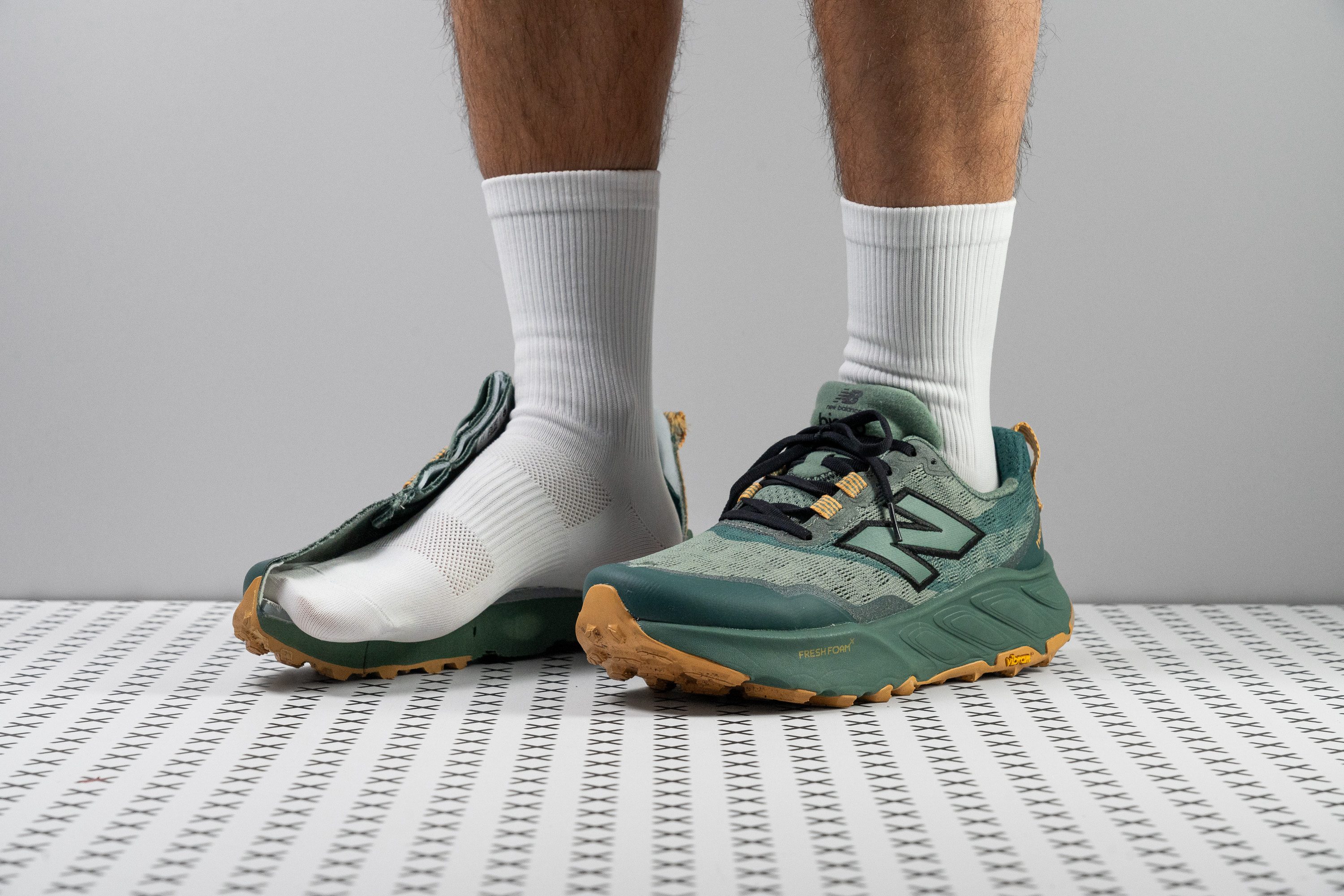

















































What makes it the best?
The New Balance Fresh Foam X Hierro v9 is a low-drop running shoe with maximum cushioning and reliable grip. Lab results verify that it features the world-class Vibram outsole, studded with Traction Lugs for confident footing. We think it’s the best trail shoe for runners dealing with knee pain.
We turned the shoe upside down and found the Vibram Megagrip rubber in the outsole. It’s lined with 3.3 mm Traction Lugs, latching onto rugged terrain effectively. We found it to be highly protective, since it proved its wear resistance in our Dremel test with a tiny 0.9 mm dent.
Measuring a sky-high 37.3/33.1 mm, Hierro v9 is a max-cushioned platform that effectively reduces the impact of landing. We measured its forefoot at a massive 124 SA, meaning it absorbs shock 22.8% better than average.
With a resulting heel drop of 4.2 mm, it encourages landing towards the front part of our foot, reducing strain on our hips and knees.
Unfortunately, runners seeking a lightweight ride won’t find that here. At 10.9 oz (309g), Hierro v9 is 6.9% bulkier than average.
Pros
- So much foam underfoot!
- Vibram Megagrip outsole
- Improved Fresh Foam X midsole
- Surprisingly stable
- Amazing durability
- Ideal for long distances
- Available in multiple widths
- Good quality materials
- Excellent for forefoot and midfoot strikers
Cons
- Not the roomiest fit
- Heavier than before
- Lost its flexible nature
- Low drop won't suit everyone
Knee injury, like any other, needs a proper diagnosis and rehabilitation. Shoes can’t do wonders and won’t heal the injury. Here, we discuss different shoe features that may take the load off of your knees, but, as always, we recommend seeing a specialist.
Facts about knee pain
The knee injury is the most frequent one among runners. In a study that looked at 1,700 runners, 26.1% of them reported having injured their knee at least once during the year. Another study confirmed this by finding that patellofemoral pain syndrome is the most prevalent running injury, accounting for ~25% of running-related injuries. Women are 2.2x more likely to experience knee pain.
When talking about running shoes for knee pain, we focus on the features that allow the stress from the impact (landing) to be relocated from the knees to the lower leg muscles, foot, and ankle.
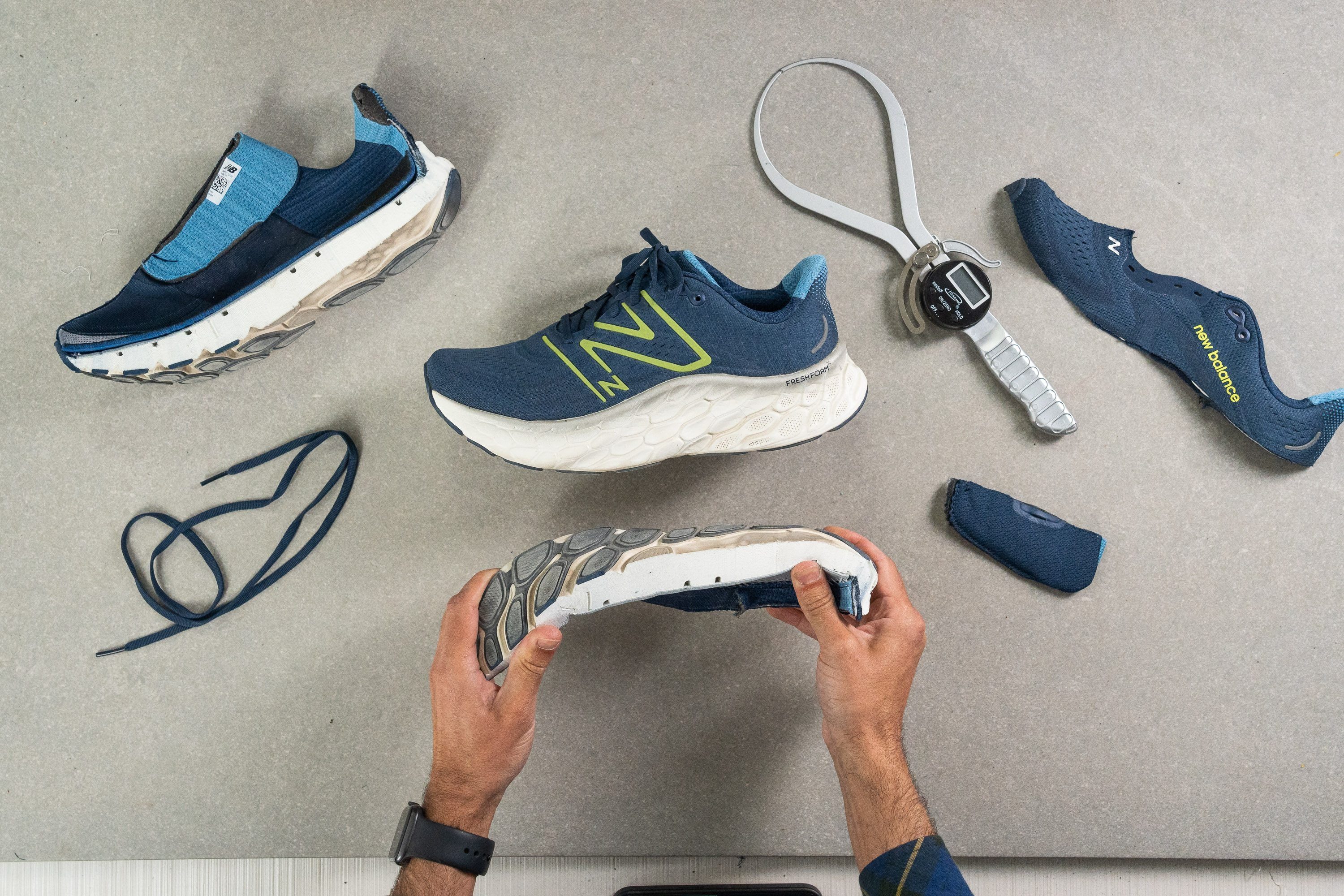
Most of the research covers PFPS. When experiencing patellofemoral pain syndrome (PFPS), also known as runner’s knee, the pain is felt at the front of the knee, around the kneecap (patella).
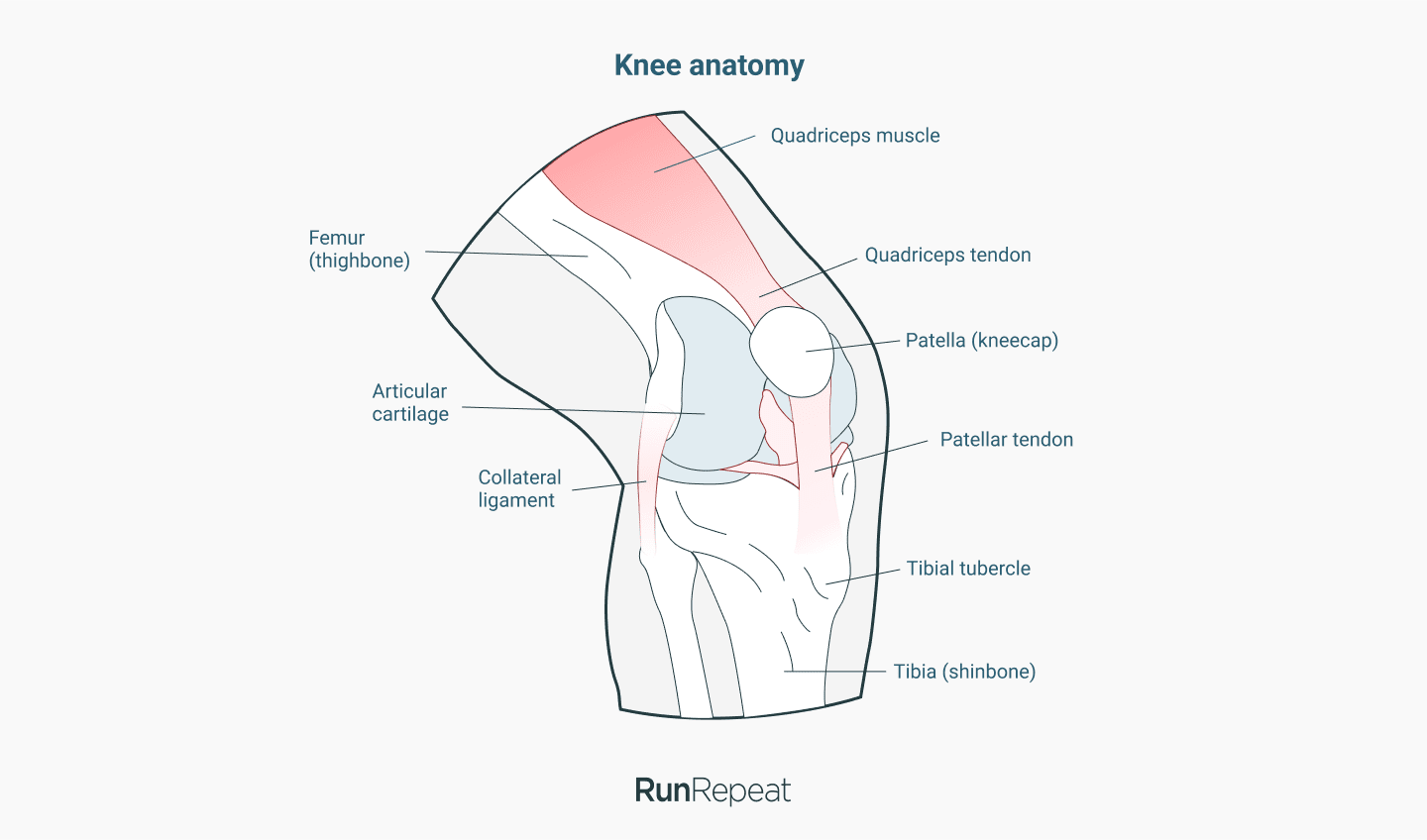
This injury happens when the kneecap doesn’t slide up and down the middle of the knee joint’s groove, but when it deviates to the side. Then, the cartilage behind the kneecap gets inflamed.
Running is good for knee health
Let’s look at what the scientific community has to say about this.
- Recreational running has no negative consequences on knee joint articular cartilage in runners without symptomatic knee osteoarthritis. Actually, recreational running may be beneficial for long-term joint health! The good thing is that only 3.5% of recreational runners have osteoarthritis (knee or hip), unlike sedentary individuals who experience it at a much higher degree (10.2%).
- Higher weekly mileage does not mean higher knee osteoarthritis prevalence. This systematic overview has found that there is no difference in knee osteoarthritis prevalence between runners who run 8-32.1 km, 32.2-48 km, or more than 48 km per week, and controls who run less than 8 km per week.
- A meta-analysis of 17 studies has shown that running may be protective against generalised knee pain and is not associated with radiological signs of knee osteoarthritis.
Why diagnosis matters
It’s easy to say, “My knee hurts.” What’s not always easy is understanding why it hurts. It’s important to nail the exact cause so that you can nail the rehab. Otherwise, you can spend weeks and months struggling with pain and maybe not running at all during that time.
|
For some runners, the pain may appear because they have flat feet and without a good support, the imbalances will keep creating issues in the knee joint. For others, it may be about a different injury they are compensating for. Often, the inner thigh muscle is weaker and used less, while the outer one is stronger and tighter. Working on this balance can help a lot with knee pain. |
If you ignore knee pain for a longer period of time, you may damage the knee cartilage and even develop knee arthritis.
3 features to look for in running shoes for knee pain
Based on the research and our experience, if you’re struggling with painful knees, we recommend finding running shoes that have:
- A design that allows landing on the forefoot,
- A heel drop lower than 5 mm to prevent putting too much stress on the knees, and
- Shock absorption of at least 80 SA at the forefoot because forefoot strike is recommended, so the foam at the forefoot must do a good job of dampening the impact.
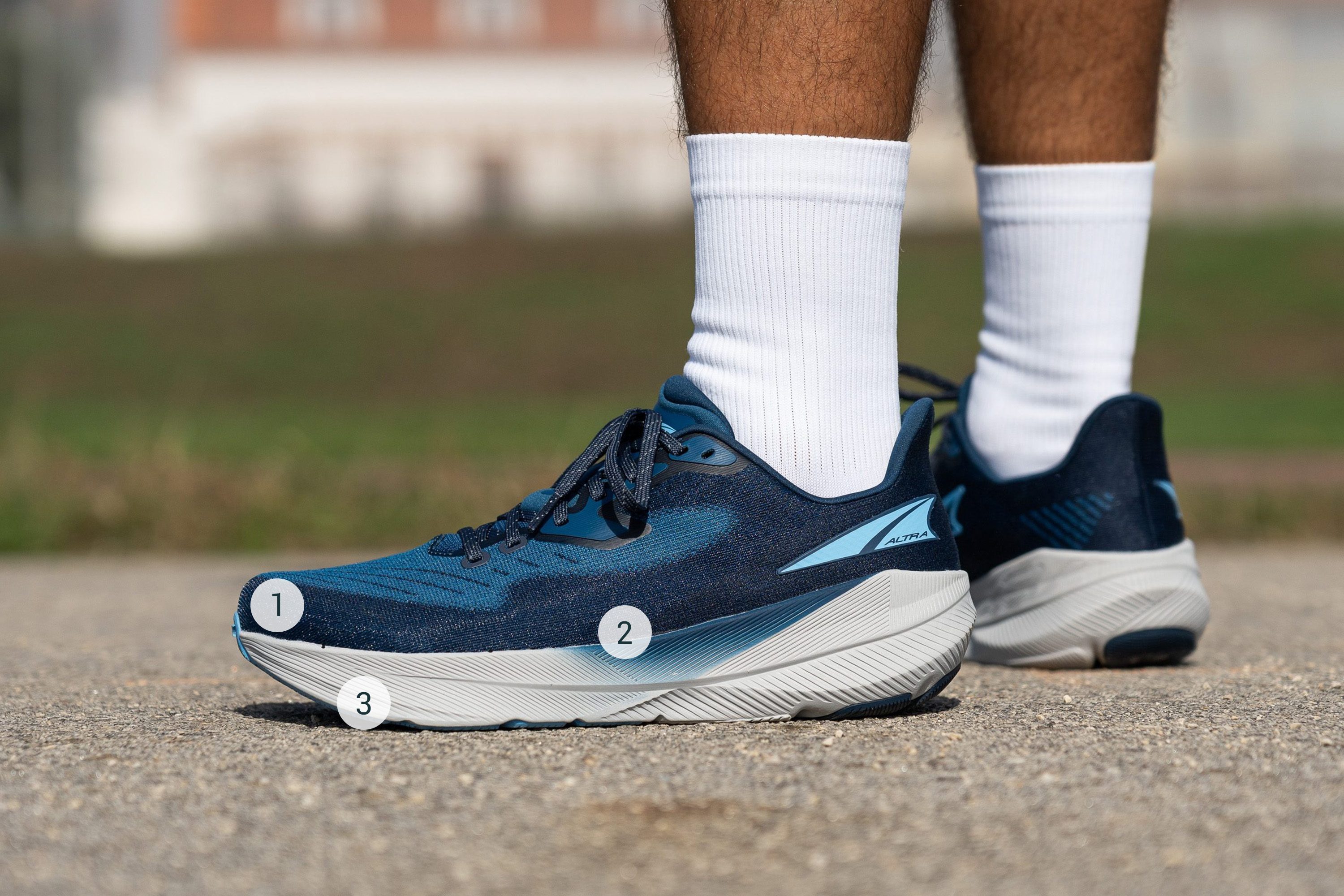
It’s worth noting that most of the shoes made for forefoot strike already have a low heel-to-toe drop.
Forefoot strike is recommended when your knees hurt
Many studies have confirmed this. Let’s look at a few:
- Landing on the forefoot together with a cadence increase results in lower patellofemoral joint stress than when runners land on the heel.
- Minimalist running shoes can be good for painful knees! When 15 healthy heel strikers were given different running shoes - those with a minimalist index of 26% and of 86%, researchers noticed these differences: a significant reduction in the maximum flexion angle of the knee, the contact area of the patellofemoral joint, and the peak knee extension moment. They concluded that wearing minimalist running shoes significantly decreases patellofemoral joint stress and which potentially lowers the risk of patellofemoral pain syndrome.
If you’re familiar with the minimalist index, we recommend looking at this calculator. - Running with a rearfoot strike imposed higher biomechanical loads on the knee and patellofemoral joints, while a forefoot strike imposed higher loads on the ankle joint and Achilles tendon.
- A forefoot strike may reduce the risk of running-related knee injuries because it exhibits lower patellofemoral stress and knee frontal plane moment than a rearfoot strike.
What basically happens is that, when landing on the forefoot, Achilles' tendons and calves take most of the impact and absorb it, instead of it going to the knees. While we've said before that there's no best foot strike, because one foot strike does not work for everyone, the research has shown that transitioning to the forefoot strike may help with painful knees.
Curious about the foot strike? Head over here: Foot Strike: The Ultimate Guide.
Why low heel-to-toe drop is important for painful knees
In one study, 18 runners ran in shoes with 4 different heel drops: 0, 5, 10, and 15 mm. Researchers observed that compared to running in zero-drop running shoes, running in shoes with heel drops higher than 5 mm increased the peak patellofemoral joint stress significantly (more than 15% when running in shoes with a 10 mm and 15 mm drop), which was mainly due to the increased knee extension moment.
This study even took it to extreme levels by tracking biomechanical parameters when runners with patellofemoral pain ran in shoes with a negative heel drop (-11 mm) and a positive heel drop (5 mm). Running in shoes with a negative heel drop has shown decreased peak patellofemoral joint stress, which may decrease the patellofemoral joint loading and, therefore, reduce the possibility of further development of patellofemoral pain. We don’t recommend running in such shoes and, thankfully, they are not available on the market, except for some zero-drop shoes that we measured to be negative-drop ones, but such heel drops never got lower than -0.8 mm.
To calculate the heel drop, we have to measure the stack heights first.
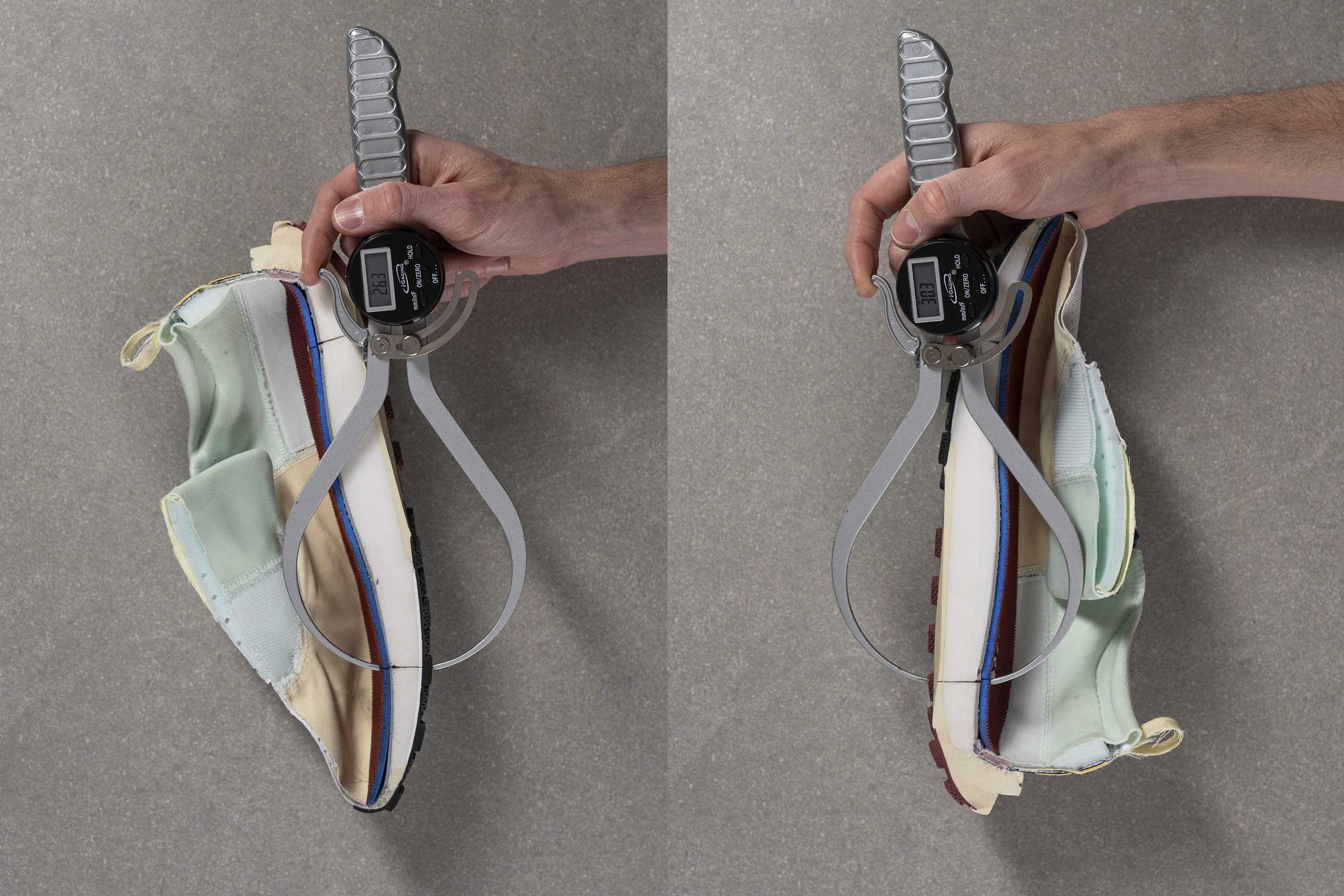
Calculating the heel-to-toe drop is now easy: We just subtract the forefoot stack height from the heel stack height.
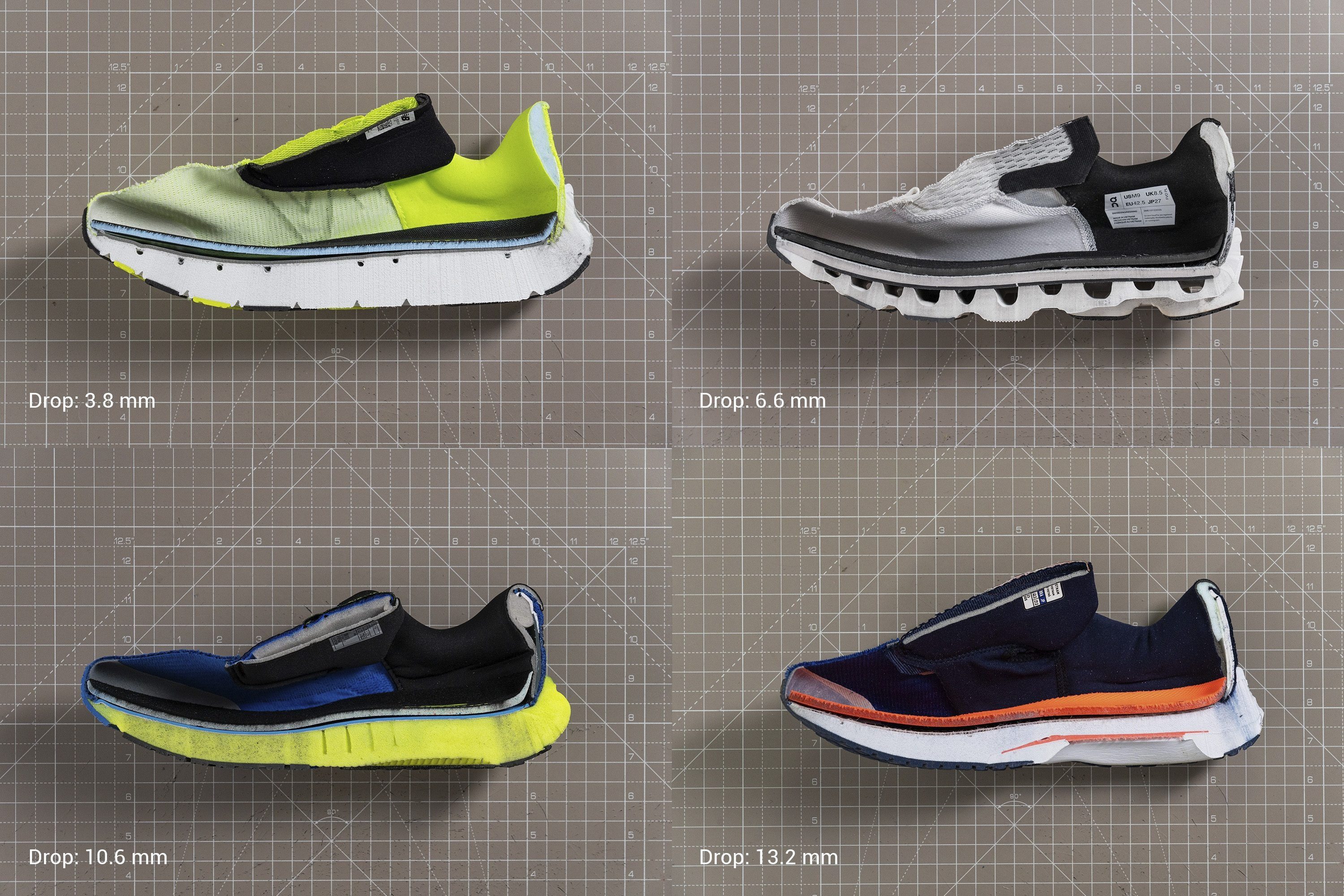
If you’ve been running in high-drop running shoes until now, we recommend that you take time to slowly transition to a low-drop shoe. Better to start with a low drop than a zero drop, as switching to a zero-drop shoe may be too extreme.
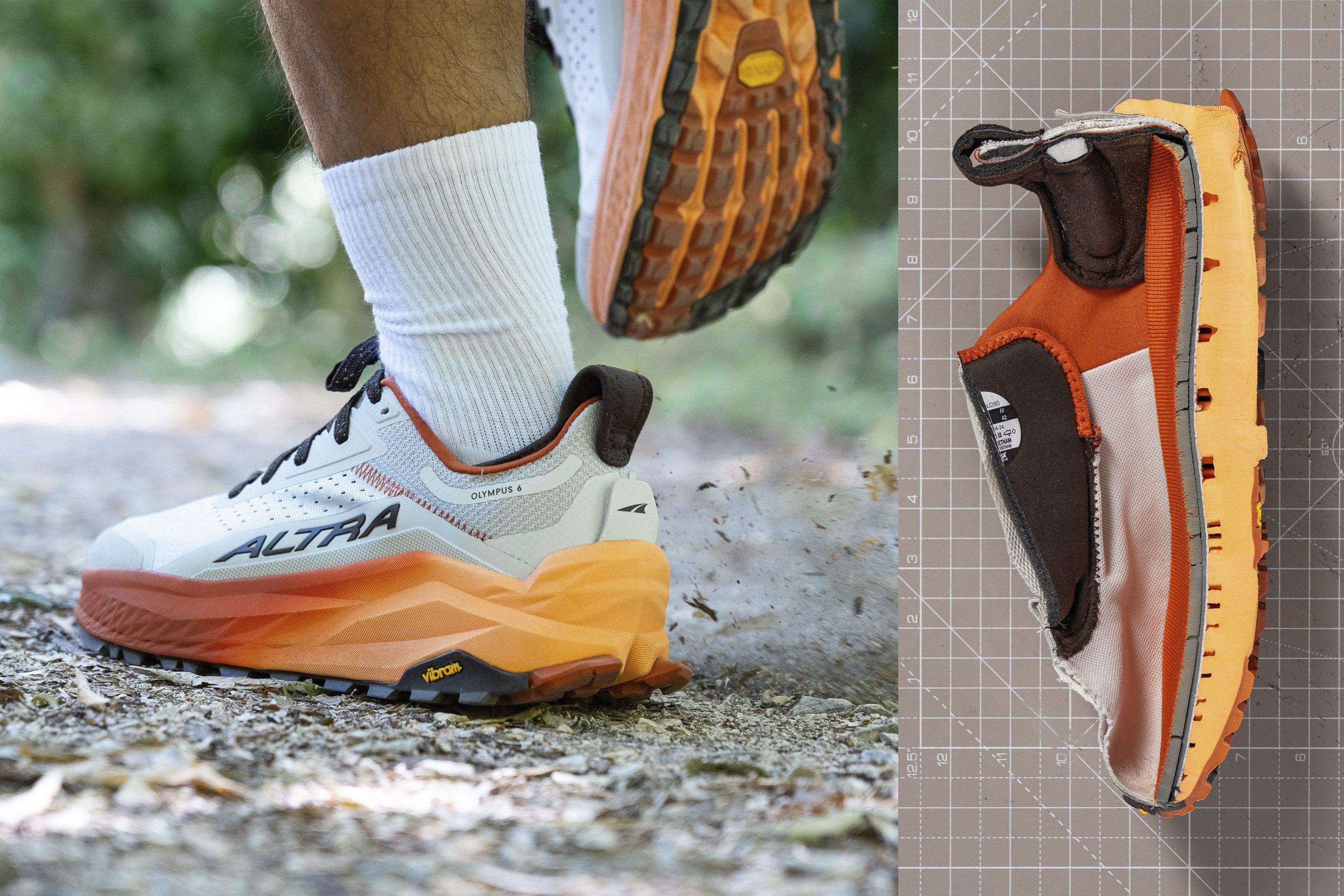
Sudden changes in heel drop may end up with an injury, especially when the change is big (4mm or more) and when you’re aiming for a zero drop. Different heel drops hit different leg muscles. Zero-drop shoes use the foot muscles the most, and as the heel drop raises, so do the muscles utilised, ending with the gluteus and hip muscles in high-drop shoes.
Given that the majority of runners here grew up in conventional shoes and trainers that have a higher drop, they are most likely used to that one, but not to the zero drop.
It’s also worth noting that, in high-drop running shoes, it would be difficult to land on the forefoot. The chunky heel comes in between! This can be great if you want to stop overstriding but not great as you won’t land on the forefoot. We’ve covered this topic in greater detail here: Heel to Toe Drop: The Ultimate Guide.
If you’re already used to a low drop and want to give zero-drop running shoes a try, here are the best-rated ones for bad knees. These running shoes can be used for strengthening the foot muscles with gradual adaptation period!
Shock absorption of running shoes for knee pain
Given that the landing on the forefoot is what can help the knees as it takes the pressure off of them, it’s best when there’s good cushioning to protect you from the impact at the landing.
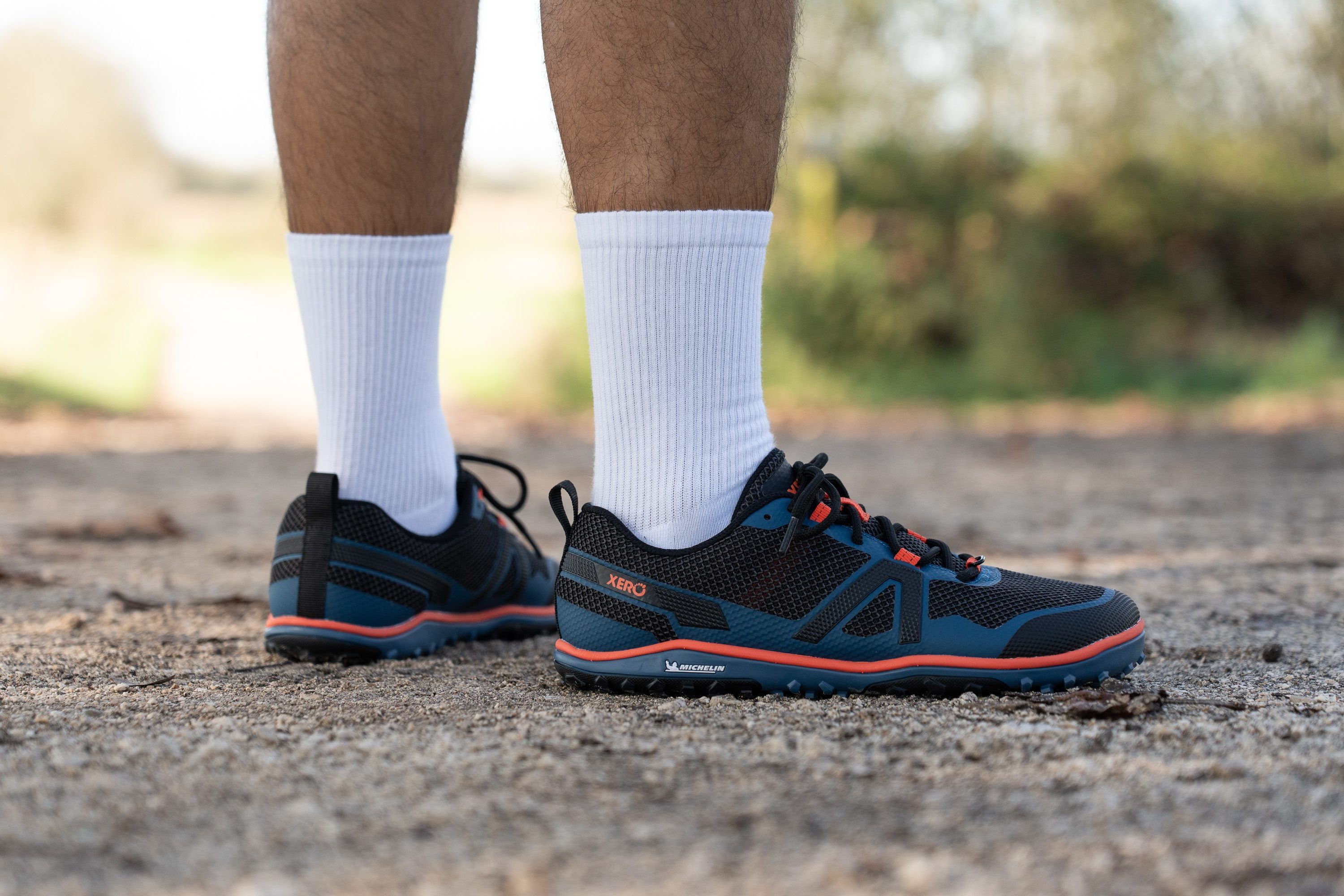
Some low-drop running shoes may lack cushioning here because they are very minimalist or even barefoot, and that’s ok for runners who are very experienced with such shoes. If you’re not, and if you’re struggling with painful knees, we recommend a cushioned forefoot. Previously, we'd focus on stack height (20mm minimum). Now, we can rely on shock absorption!
| We recommend a shock absorption of at least 80 SA at the forefoot for runners who struggle with knee pain. |
Shock absorption tells us how protective the midsole is and this is exactly what we're looking for when dealing with knee pain. And, we look at the lab test results for the shock absorption test done at the forefoot.
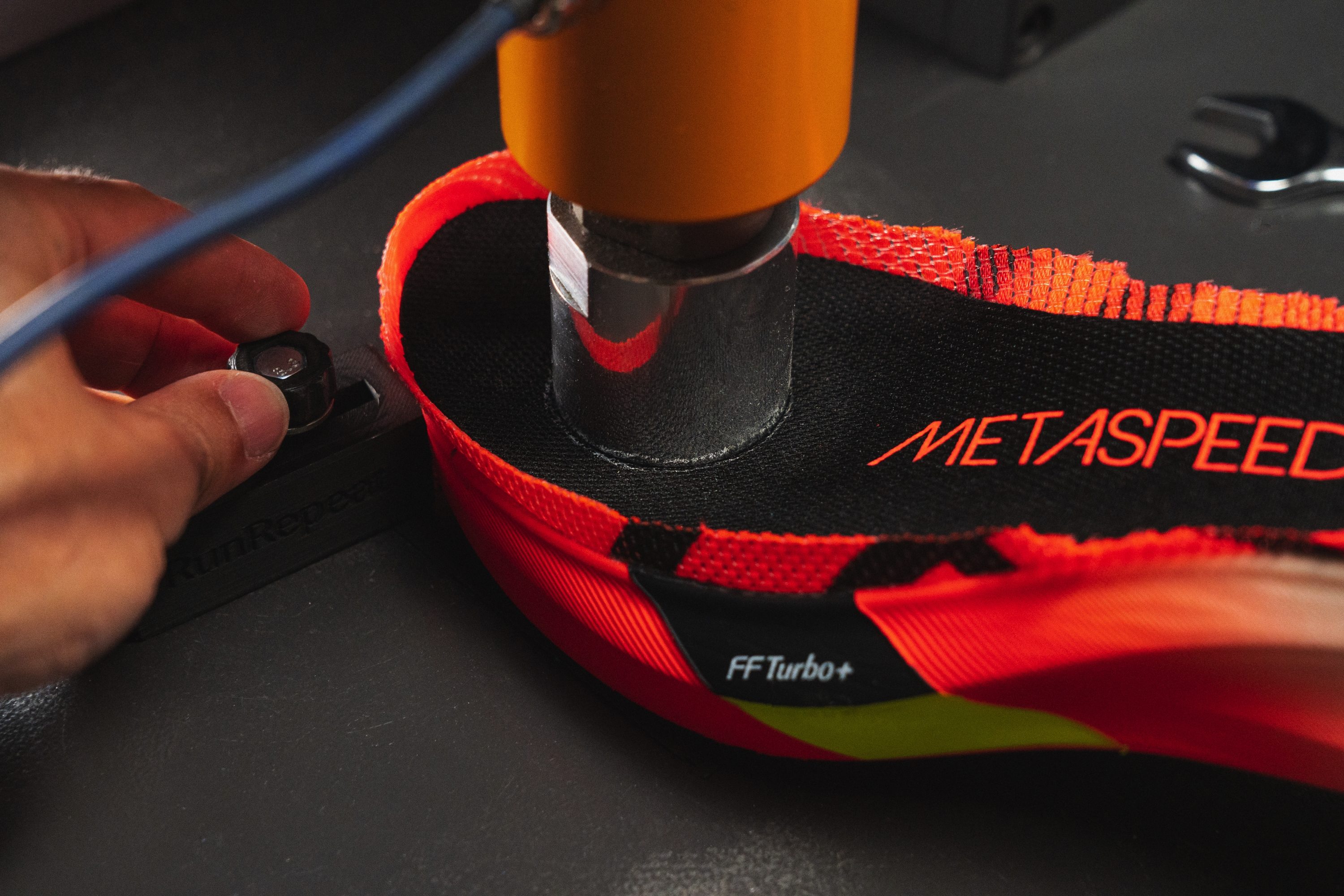
The higher the result in SA, the better the job that the midsole does at dampening the impact. When the result is low, it means that our legs will have to deal with the impact forces much more, and that means more stress is sent to the legs. As if the painful knees haven't had enough of that.
Softness of running shoes for knee pain
Many runners look for softer shoes thinking they will provide the best comfort but running shoes can be too soft, meaning our feet sink in at the landing and then don’t bounce back enough.
Also, softer shoes can be significantly less stable, so it’s about personal preference and needs, which depend on different foot conditions.
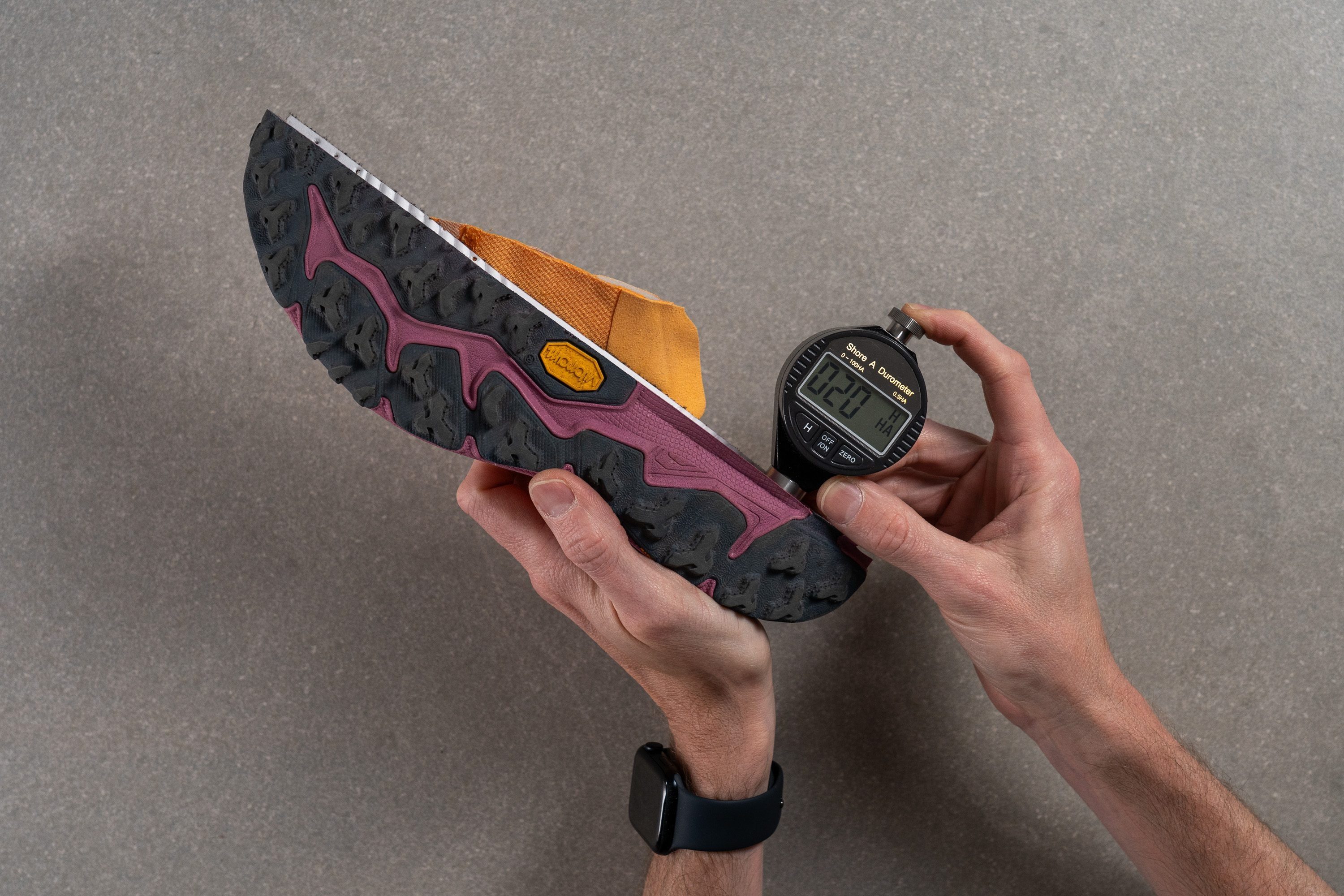
In case you want to go the softer route, here are the softest running shoes we’ve tested so far that fulfil the criteria for knee pain:
And, if you want something firmer, here’s a selection of shoes that won’t disappoint in that regard:
Toebox width in shoes for runner’s knee: lab data
Given that the forefoot will do so much work in these running shoes, let’s pay more attention to it! Runners have different shapes of toes, which is why they have different needs when it comes to the toebox width.
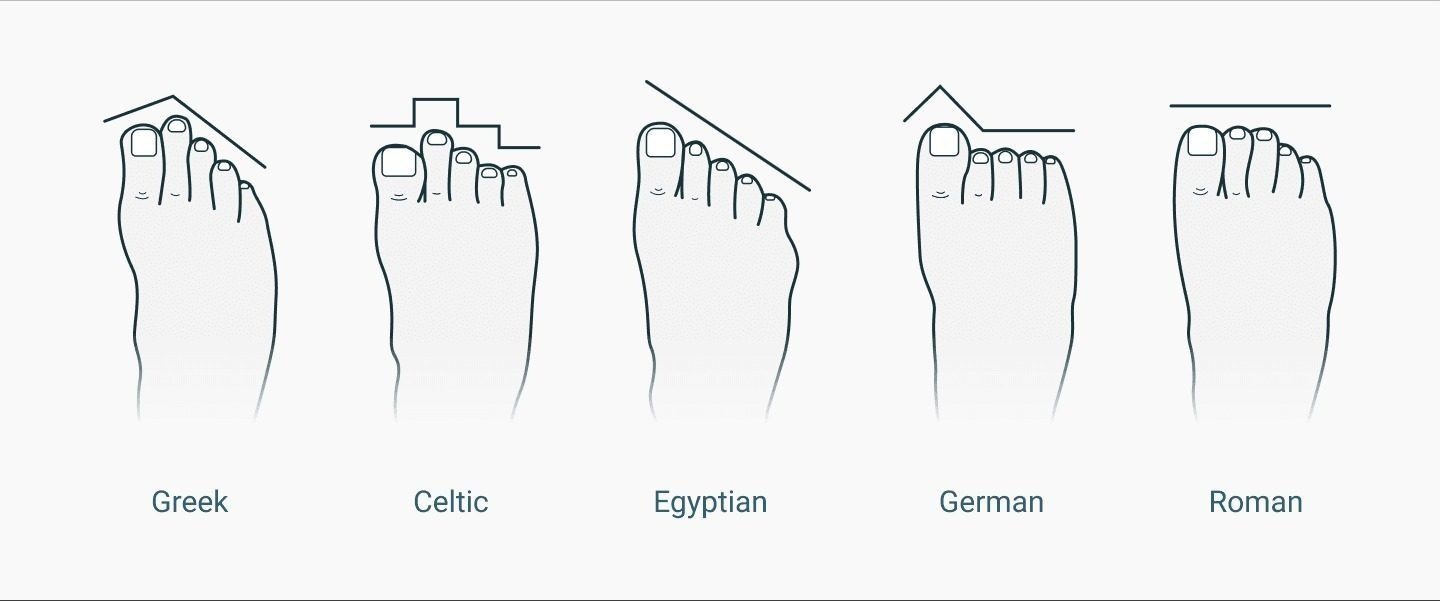
In our lab, we measure the width of the shoe in 2 places: at the big toe and where it is the widest (around the ball of the foot). We do both measurements so that runners can get the toebox that offers more room exactly where their toes need it!
This gel mould perfectly resembles the shoe's interiors.
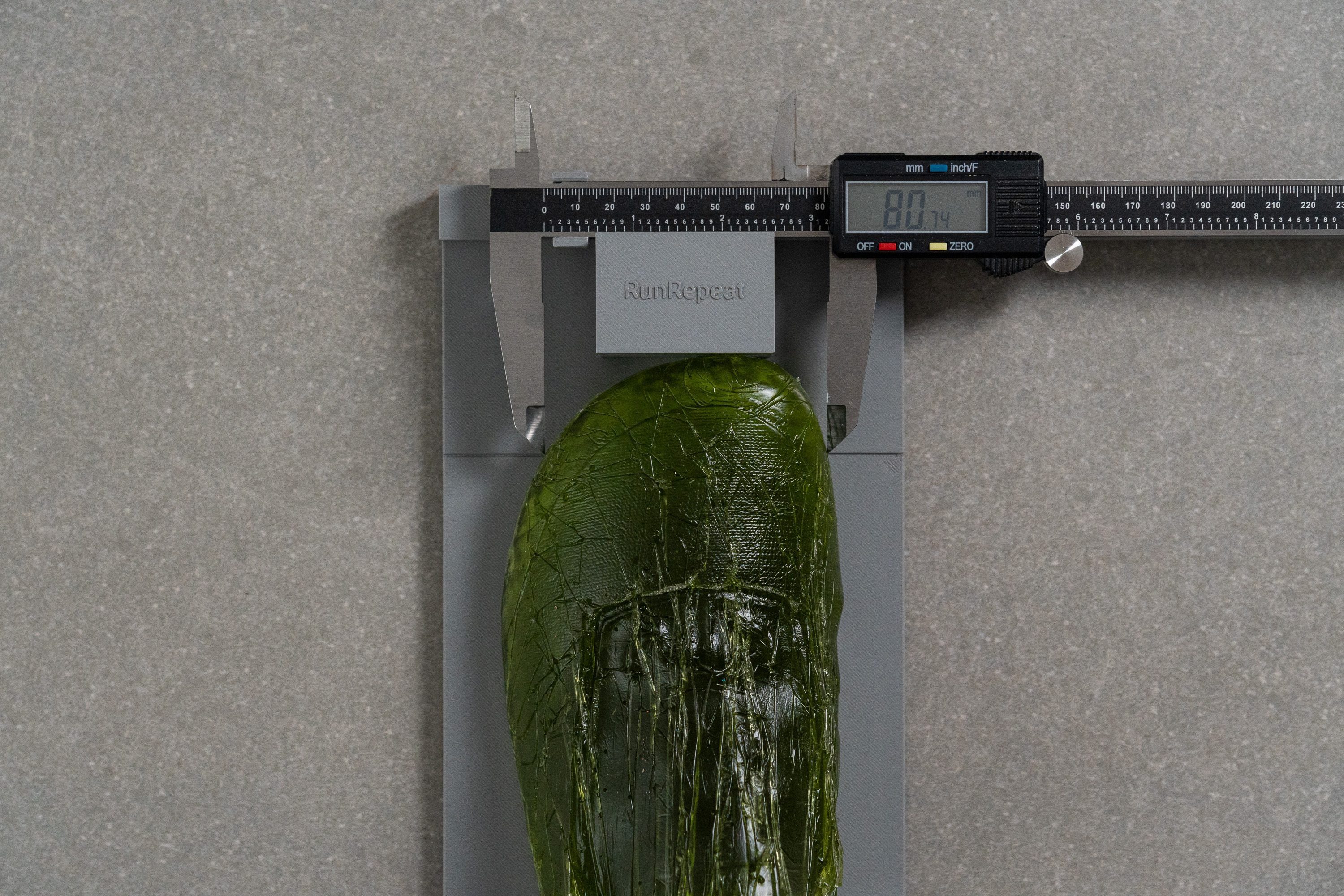
If this is where you need the most room, here are running shoes for painful knees that are the widest at the big toe:
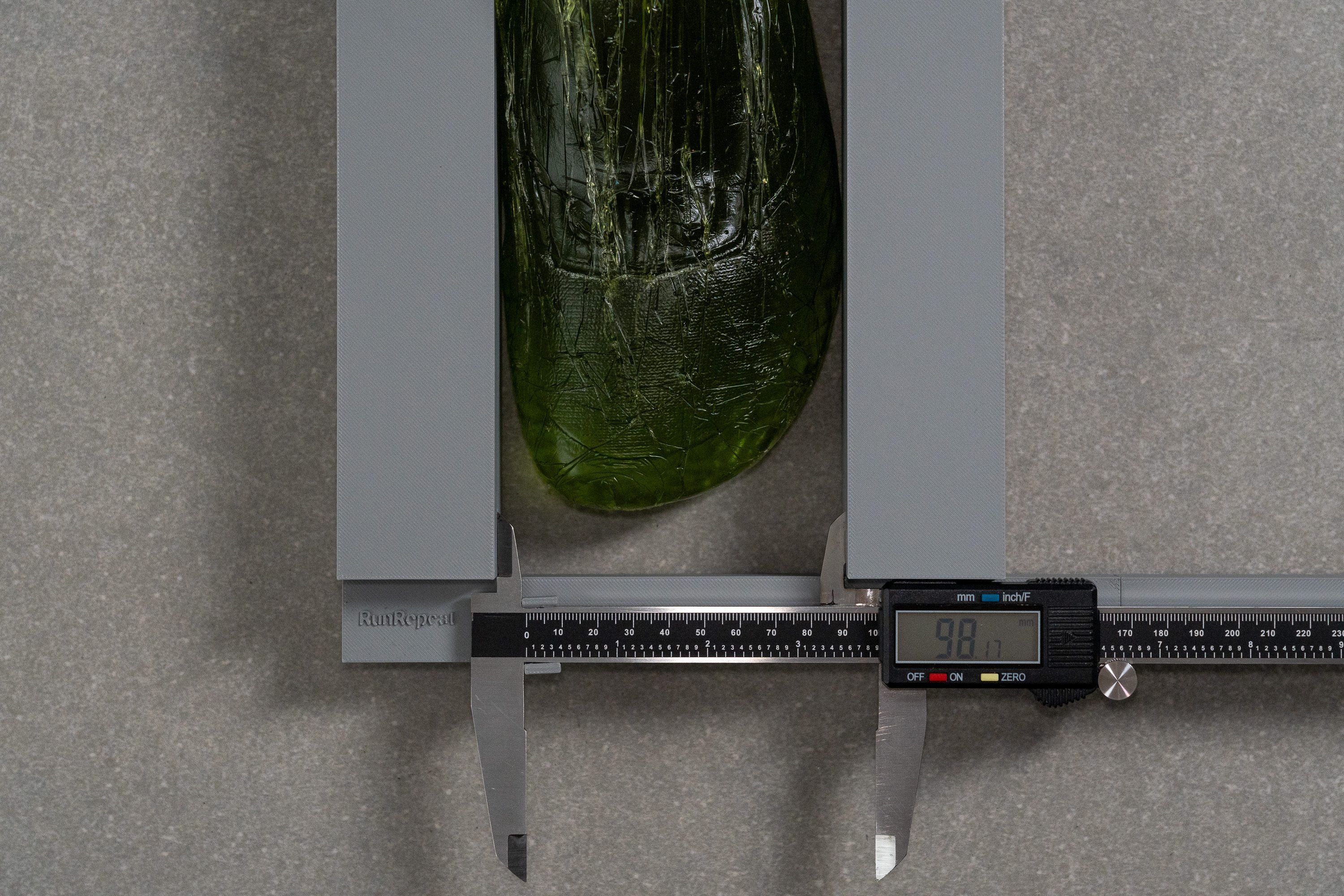
If your feet are the widest in this area, here are running shoes to consider:
However, if you have narrow toes and want something where you won’t slide left to right, we recommend finding narrow toeboxes:
You may have already noticed that we always add the height of the toebox to these tables. That’s because many runners get black or bleeding toenails and we’d love to prevent that. Finding running shoes with high toeboxes has never been easier, given that the toebox height is also something we measure and always publish in our shoe reviews.
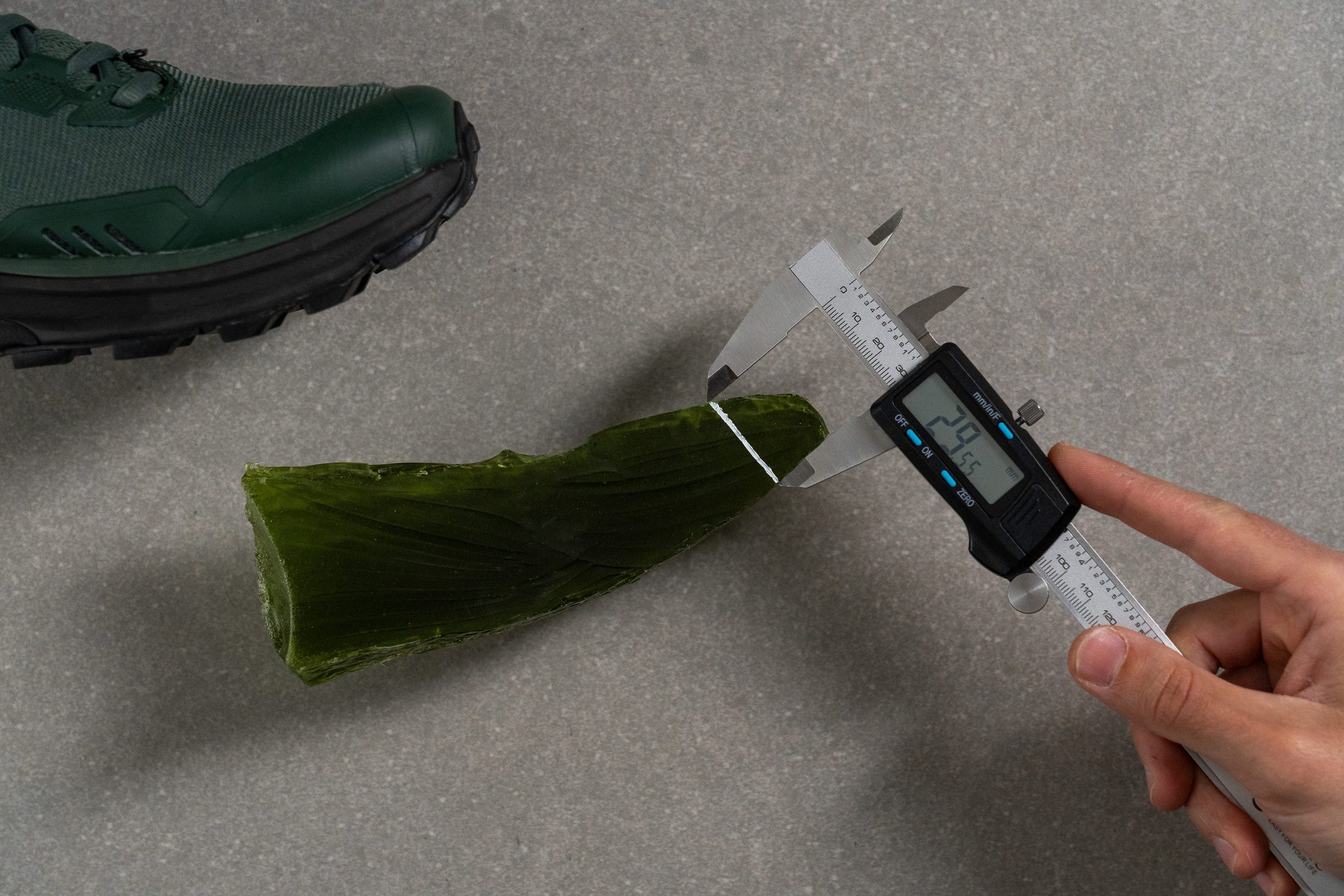
Most durable running shoes for knee pain
If you’re buying new running shoes because your knees are hurting, you may want to know how durable they are so that the investment pays off. Given that we don’t test for the durability of the midsole (YET!), we will explain here other durability tests that we do in our lab.
The deeper the dent, the less durable the outsole.
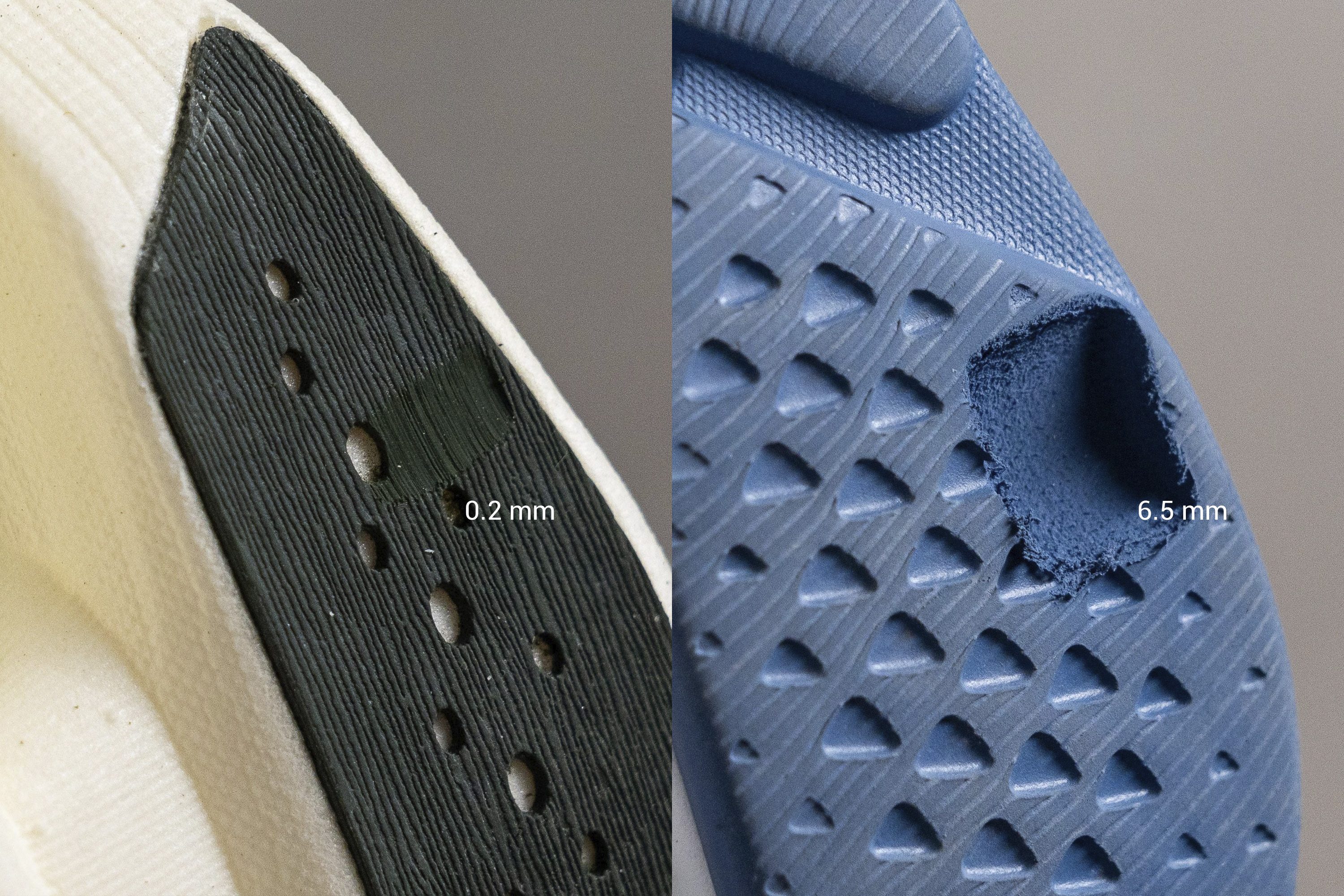
The good thing about the outsole is its hardness. When we test the durability of the toebox and heel padding, the material is soft and loose, so we can’t measure the damage. We assess it on a 1-5 scale, where 5 is the most durable and 1 is the least durable.
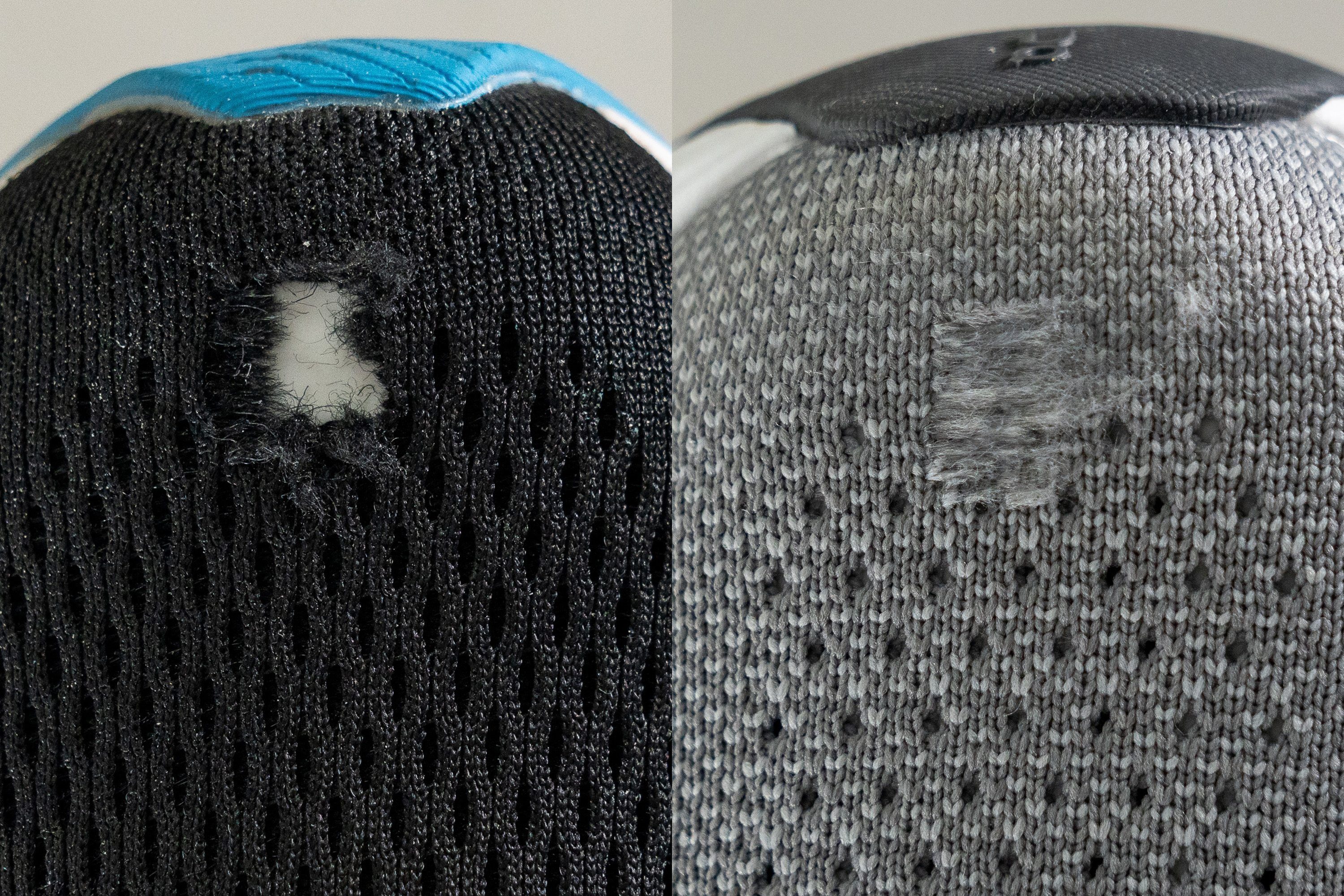
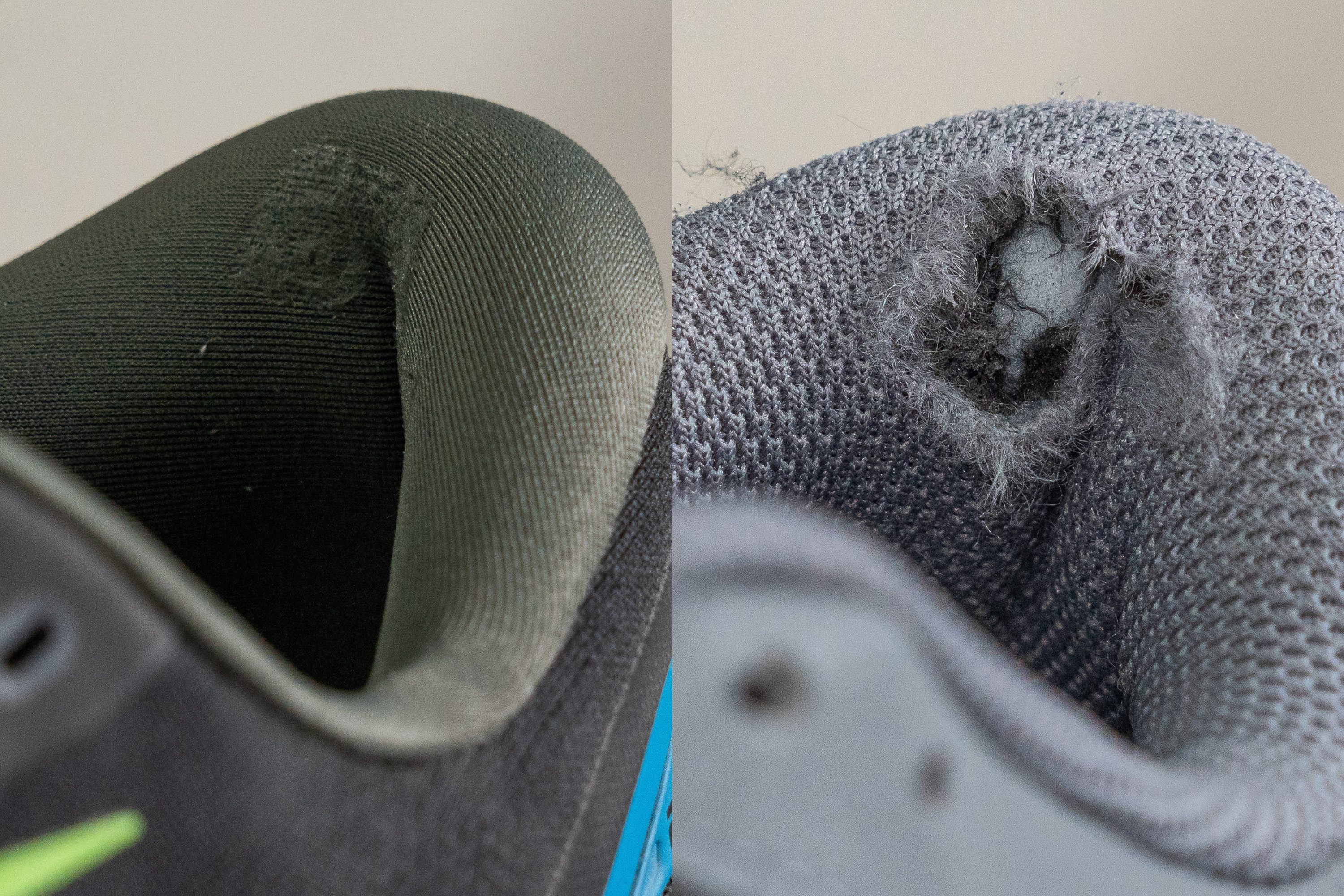
Different knee injuries
Next to the patellofemoral pain syndrome, runners often experience patellar tendonitis or jumper’s knee. The patellar tendon connects the kneecap to the shin bone and it gets inflamed due to overuse. The pain is felt at the front of the knee, below the kneecap.
When the knee hurts on the outer side, we're often experiencing iliotibial band syndrome (ITBS). This is a classic overuse injury and rehab, which involves a lot of hips and glute strengthening, is a must.
Pain coming from knee bursitis can be felt in different places in the knee, depending on which bursa (small fluid-filled sac) got inflamed. These small sacs reduce friction and cushion the pressure points and when they get irritated, they swell with excess liquid. This is why we often see swelling and tenderness. Ice packs and NSAIDs are often a part of the rehab plan, but a visit to the specialist is highly recommended as sometimes the swelling is so bad that they have to drain the fluid. There could also be an infection, so antibiotics are needed.
